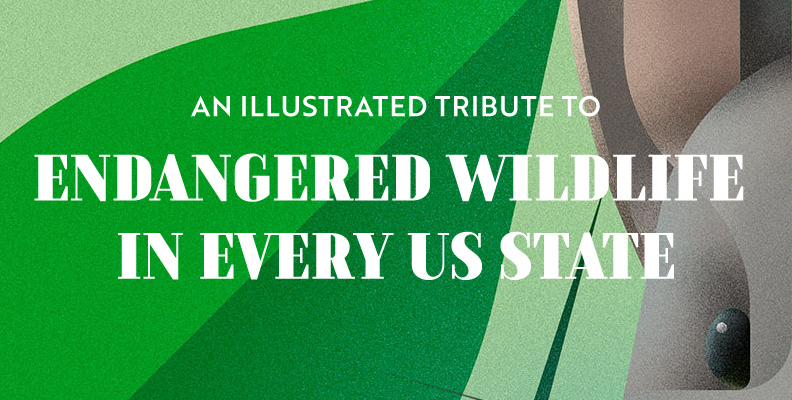Thousands of endangered species around the world are on the brink of extinction. And human beings are bio-diversity’s greatest enemy: we’re responsible for the endangered status of 99% of at-risk species.
A handful of conservationists have been hard at work changing the story for a number of endangered populations. But in the U.S., hundreds of species are still fighting a losing battle for survival.
We’ve created a series of posters celebrating the wildlife that each State could lose forever.
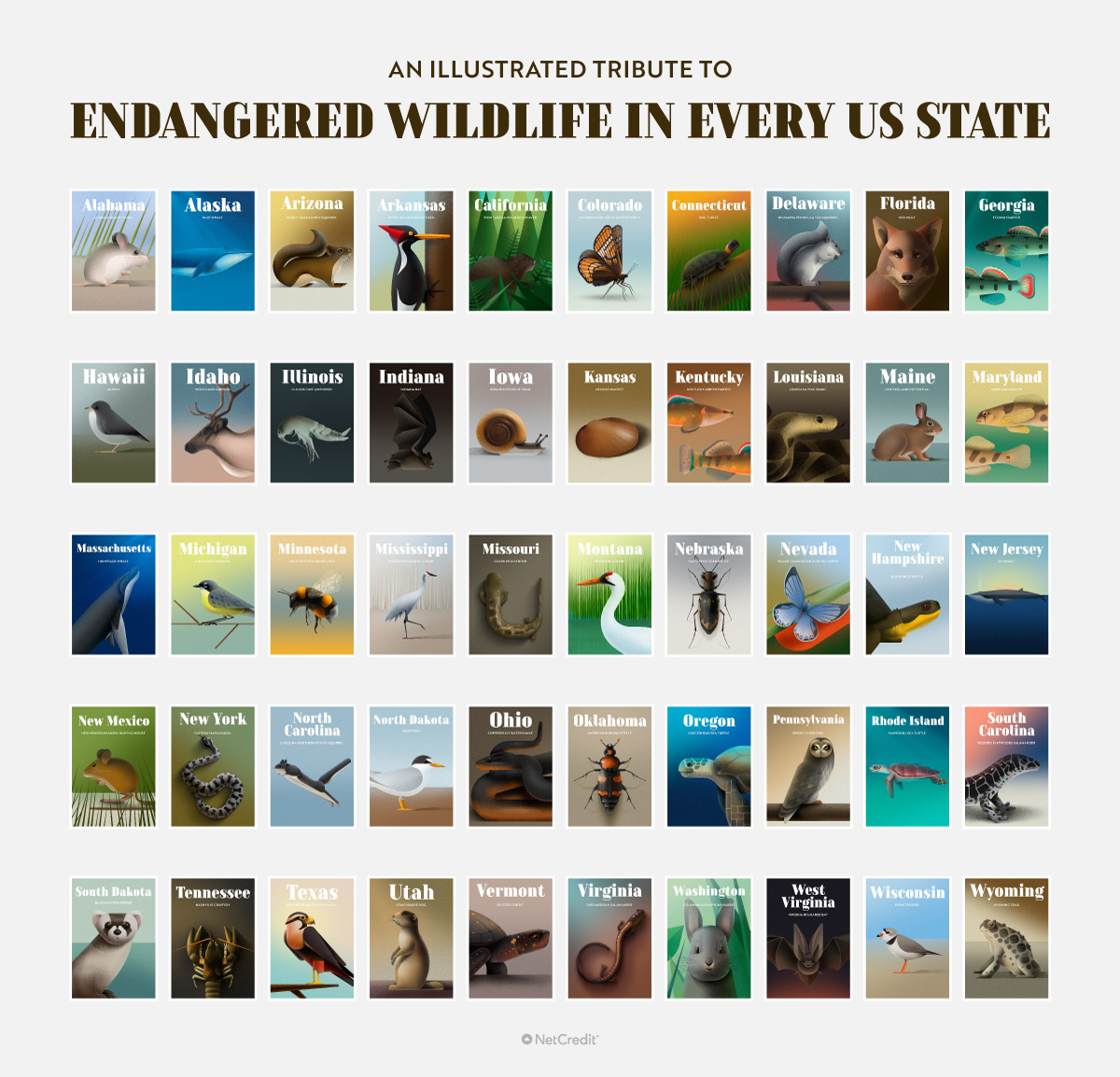
1. Alabama: Alabama beach mouse
The 12-gram mouse with enormous eyes is a bit of an architect: it is known to dig complexes up to ten burrows strong in the dunes along the coast of the Cotton State.
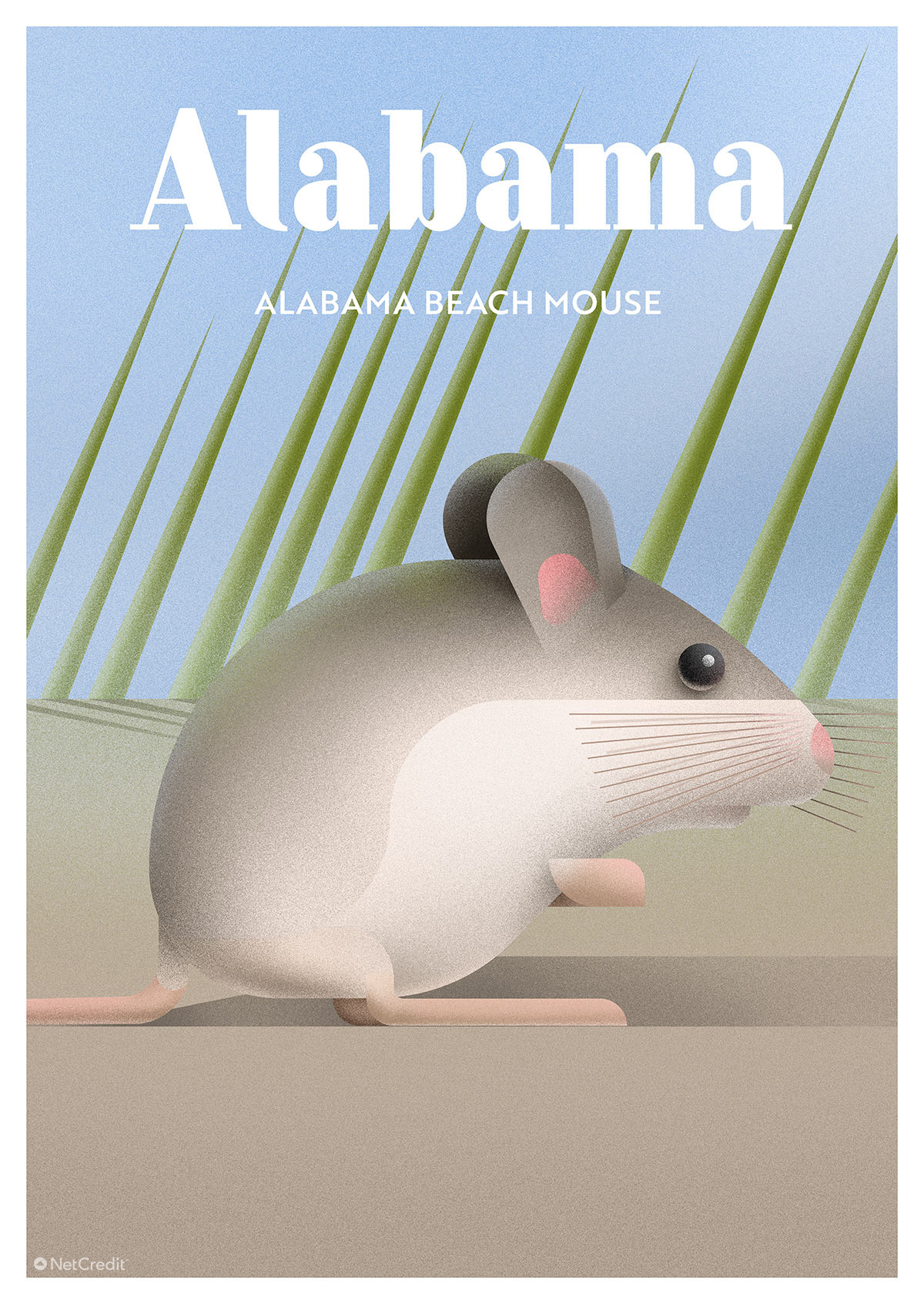
But it’s a harsh world outside. Oil-spills, hurricanes, and predators all stalk the Alabama coastline, not to mention the human impact as tourism becomes a bigger and bigger deal in the Alabama Gulf.
2. Alaska: Blue whale
At 200 tons and around 100-ft long, blue whales are the largest creatures ever to have graced our planet. But commercial whaling in the 19th and early 20th-century drove them to the brink of extinction.

It wasn’t until 1966 that the blue whale found legal protection from commercial whaling. Many are still injured or killed by passing ships today. There are less than 25,000 left – a fraction of the number slaughtered by whalers.
3. Arizona: Mount Graham red squirrel
The Mount Graham red squirrel was already thought to be extinct in the 1950s. It wasn’t until the 1970s that they were spotted again in their home region of the Pinaleño Mountains. A 1986 estimate put their number at fewer than 400.

Sadly, a 48,000-acre fire in the summer of 2017 left Mount Graham red squirrel numbers at around 35. Experts have disagreed over the best first step forward. One option is to use satellite imagery to reveal appropriate needle cover for the squirrels. Or they could remove the University of Arizona’s telescopes and a Bible camp that have impacted the mountain’s ecology.
4. Arkansas: Ivory billed woodpecker
The ivory-billed woodpecker was thought to be extinct as early as 1944. But like Elvis, those reported sightings keep coming in. A cluster of sightings in the early noughties has led conservationists to believe – although they lack definitive evidence – that the ivory-bill prospers still.
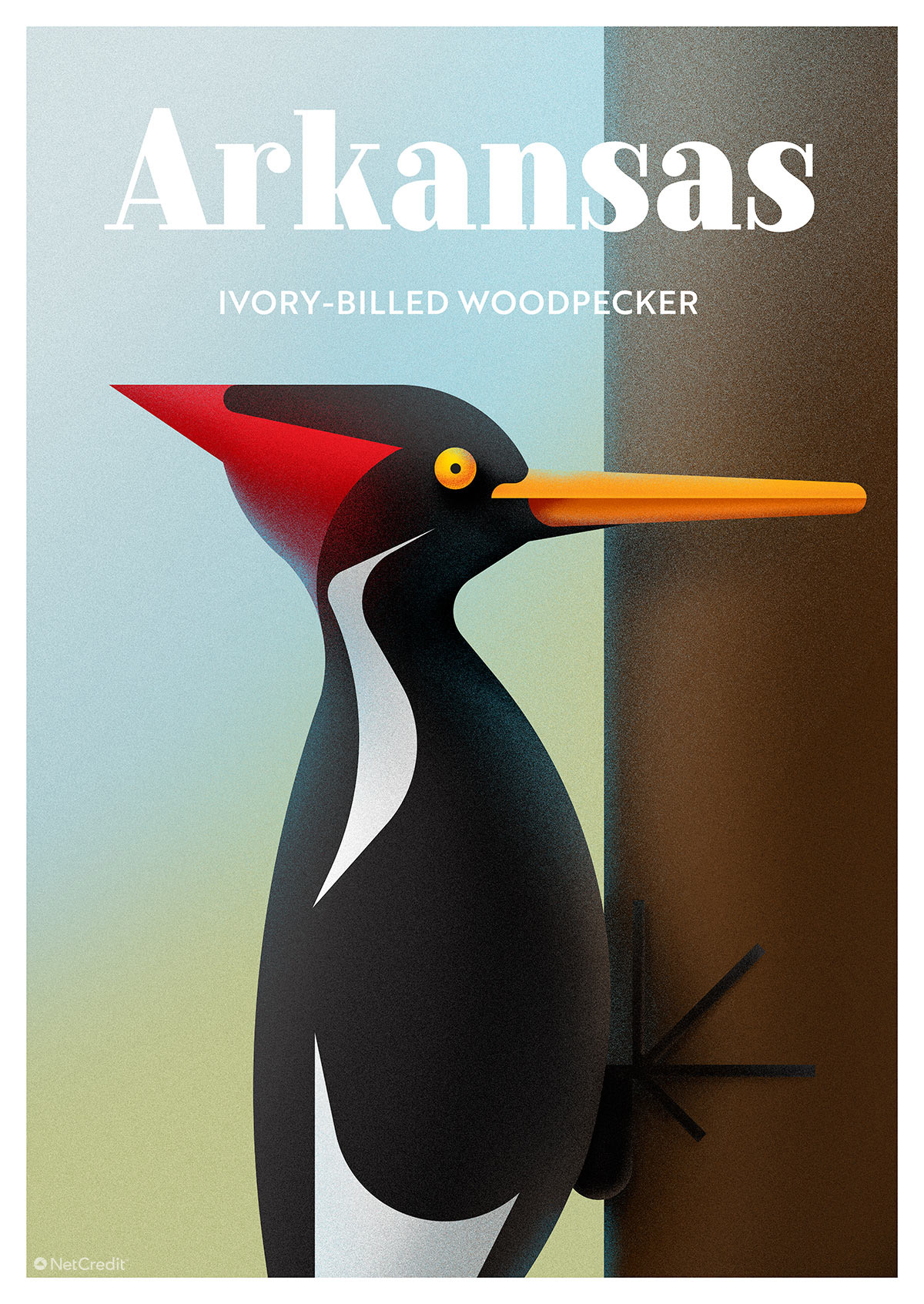
It was logging that originally did in this particularly large woodpecker, who is so rare that only two recordings of its toy trumpet-like call were ever made.
5. California: Point Arena mountain beaver
The mountain beaver is so ancient that it is considered a ‘living fossil’ and the most primitive of rodents, with anatomical features only otherwise found in fossils! They spend their days underground, coming up to collect unlikely plants such as sword fern, stinging nettle and thistle to eat.

The Point Arena variety is under threat due to development of roads, recreational centers and agriculture around their habitat. The discovery of a burrow within the Pelican Bluffs Preserve gives hope to those working to study and preserve the critters.
6. Colorado: Uncompahgre fritillary butterfly
Colorado’s exotically-spelled native butterfly lives among snow willow patches high up in the San Juan Mountains. It has an ornate, retro look: rusty or light brown wings neatly segmented with inky black lines.

Unfortunately, the Uncompahgre fritillary butterfly’s beauty has played a part in its downfall. Collectors, as well as trampling by people and livestock, have reduced their number to just 11 colonies.
7. Connecticut: Bog turtle
The draining of the sphagnum bogs and wet meadows and pastures the bog turtle calls home has pushed this orange-patched reptile deep into the endangered zone. What remains of their land is now fragmented, making matters worse.
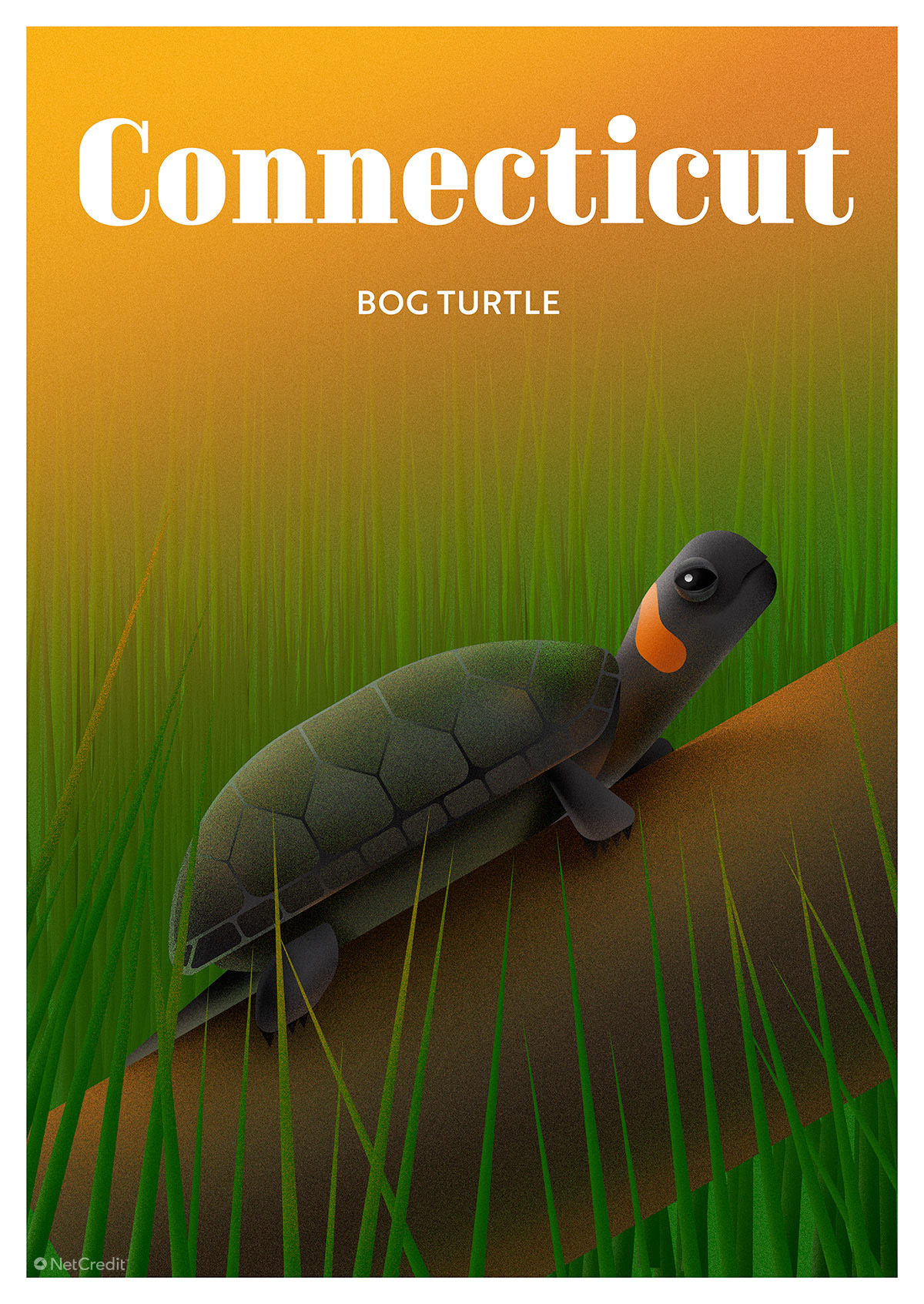 The bog turtle relies on muddy underwater spots to hibernate, while they lay their eggs in sunny spots on the bog. In addition to its habitat trouble, the turtle must deal with the various predators who covet its chewy flesh.
The bog turtle relies on muddy underwater spots to hibernate, while they lay their eggs in sunny spots on the bog. In addition to its habitat trouble, the turtle must deal with the various predators who covet its chewy flesh.
8. Delaware: Delmarva Peninsula fox squirrel
This barking, chattering gray fox squirrel is only found in Delaware. They don’t leap from tree to tree, but climb down and calmly walk to where they need to go. That said, they’re shyer than regular squirrels.
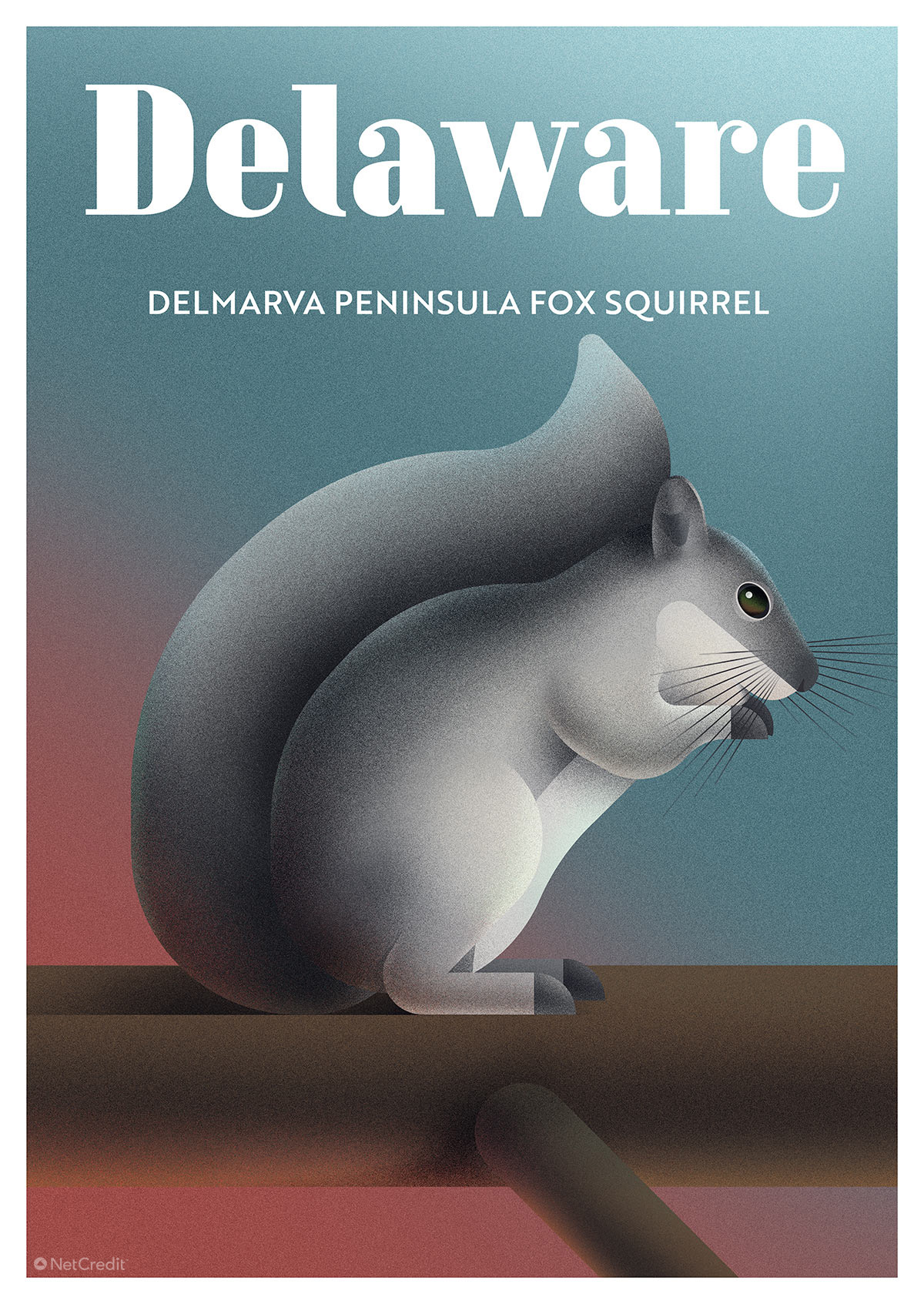
Logging and other development put the Delmarva Peninsula fox squirrel on the endangered list. A relocation program has begun to restore the squirrel’s range and number.
9. Florida: Red wolf
At over a meter long with yellow-brown fur and reddish legs, neck and ears, the red wolf is an elegant creature. It is believed to be a descendant of the gray wolf and coyote.

But humans have long held different beliefs about the creature. The first settlers offered bounties for the wolves, believing them to be in cahoots with the devil. Their diet of rabbits, rodents and raccoons has also extended to livestock, which has resulted in further culling. Today, Florida’s last remaining red wolves exist only in captivity.
10. Georgia: Etowah darter
This darter is small – less than three inches – but magnificent. Its dusky colors are offset by scarlet-tipped fins.

The Etowah darter likes clear, running waters, which makes life difficult in the wake of industrialization. It doesn’t thrive in isolated waters, although that’s often where small populations of the fish find themselves these days.
11. Hawaii: Akikiki
The ‘Akikiki, AKA the Kaua’i Creeper, has struggled in the face of avian malaria and avian pox. Unfortunately, climate change is just making these mosquito-borne illnesses more common. Other animals, such as cats and dogs, that humans have introduced to the islands are doing further damage.

With less than 500 left in the wild, you’re just as likely to spot a conservationist hand-feeding an ‘akikiki chick as a family of the birds foraging together among the trees.
12. Idaho: Woodland caribou
There may be as few as three woodland caribou left in the contiguous United States – and all of those recently spotted have been female. The South Selkirk herd of these magnificent, 600lb creatures feeds on the lichen of centuries-old trees.
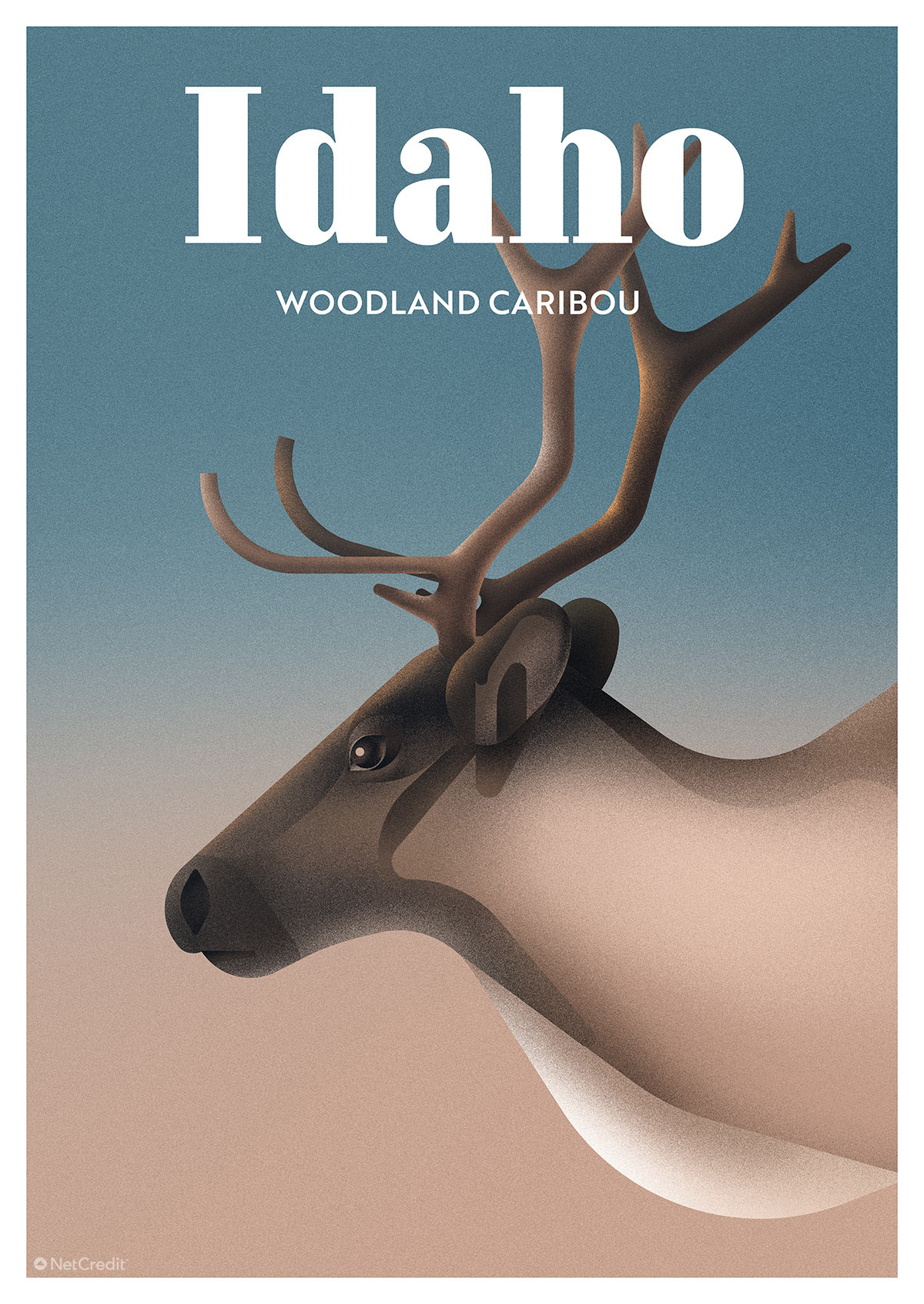
Aggressive logging strategies have left them with little to eat, and now it seems it is too late. Experts have no idea if there are any calves on the way. With many years needed for the forests to grow back into a worthy habitat, the entire continent is now looking north in the hope that the dwindling numbers of Canadian woodland caribou may be saved.
13. Indiana: Indiana bat
The Indiana bat has been considered endangered since 1967, following the influence of commercial caving and pollution. They hibernate in limestone caves, or – vampire-like – beneath the bark of dead trees.
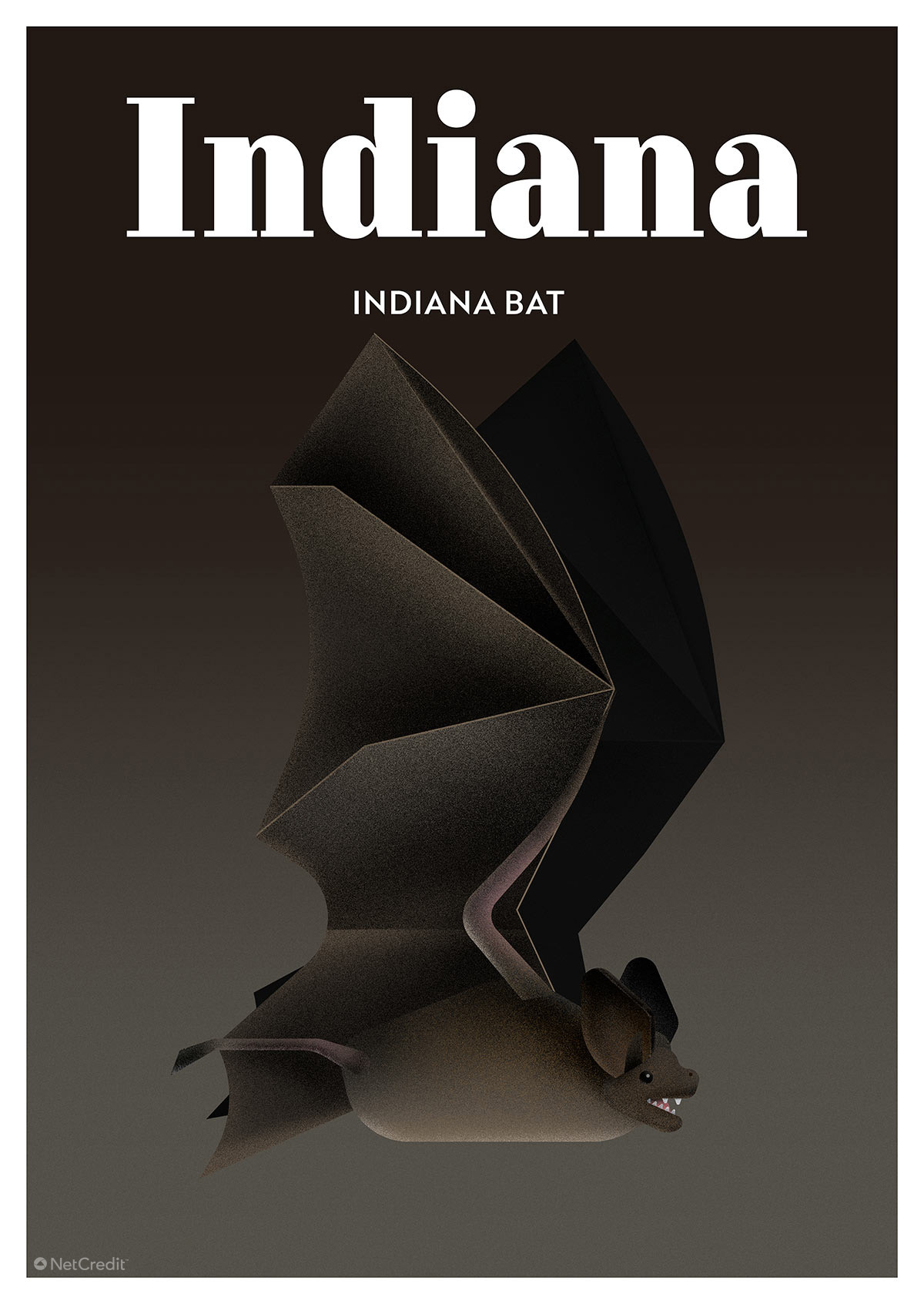
The last few years have seen their remaining numbers devastated by ‘white-nose syndrome,’ a fungus that affects bats while they hibernate. Over a million bats have died this way since 2006.
14. Illinois: Illinois cave amphipod
This tiny, silver-gray crustacean exists only in Illinois, in the cold water and away from the light. It’s so sensitive to contamination that you can actually rely on the presence of the amphipod to indicate the quality of the water in a cave system.
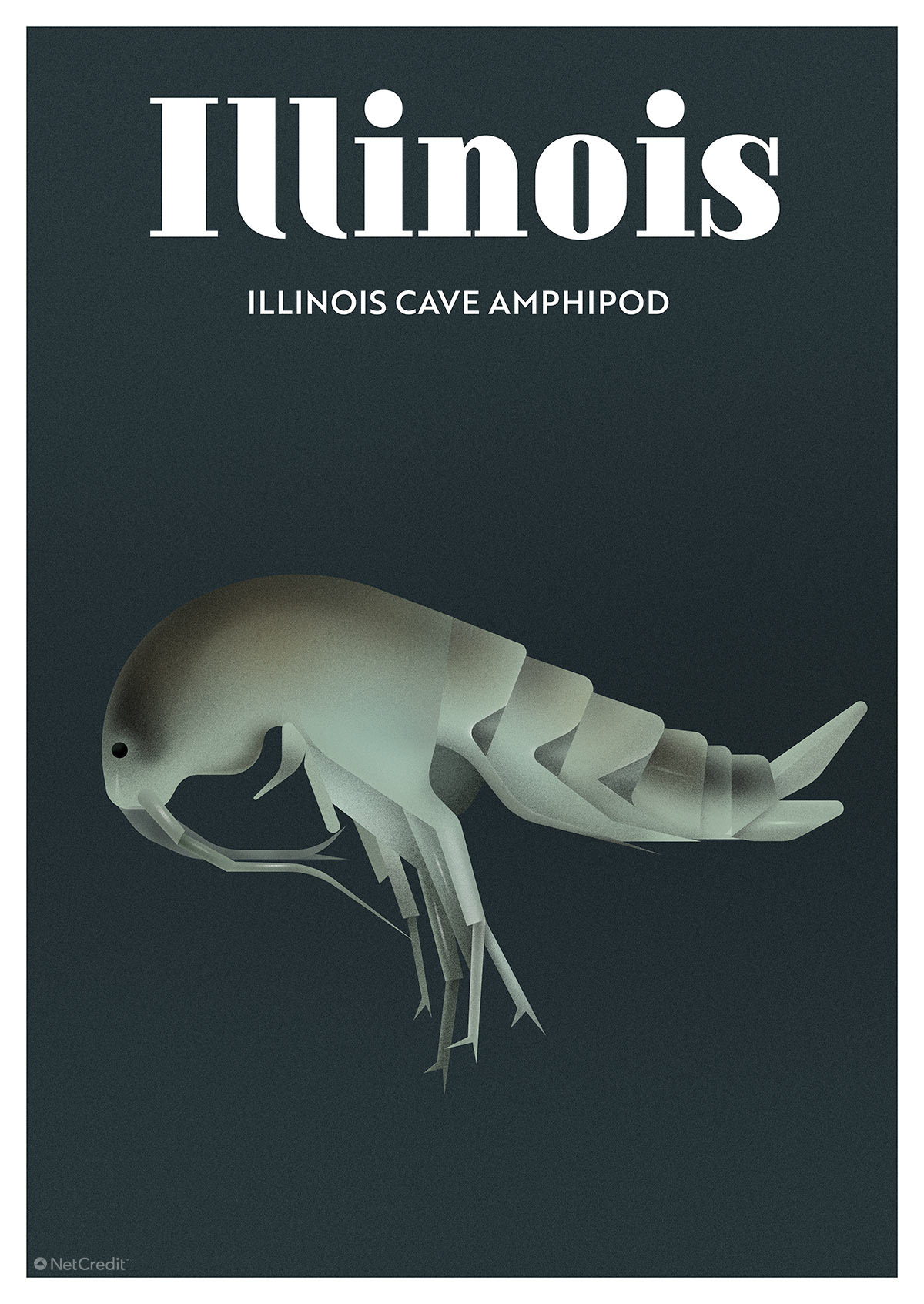
This also means that pesticides and other human detritus in the water have significantly lessened the amphipod’s number. It is forbidden to injure or kill the little creature; other research and protection strategies have been set up in the hope of restoring the Illinois cave amphipod by the year 2023.
15. Iowa: Iowa pleistocene snail
This tiny, ¼-inch snail can live up to seven years in the right conditions. Climate change is slowly jeopardizing their welfare, however, while land development such as quarrying and agriculture is doing damage at a much quicker pace.
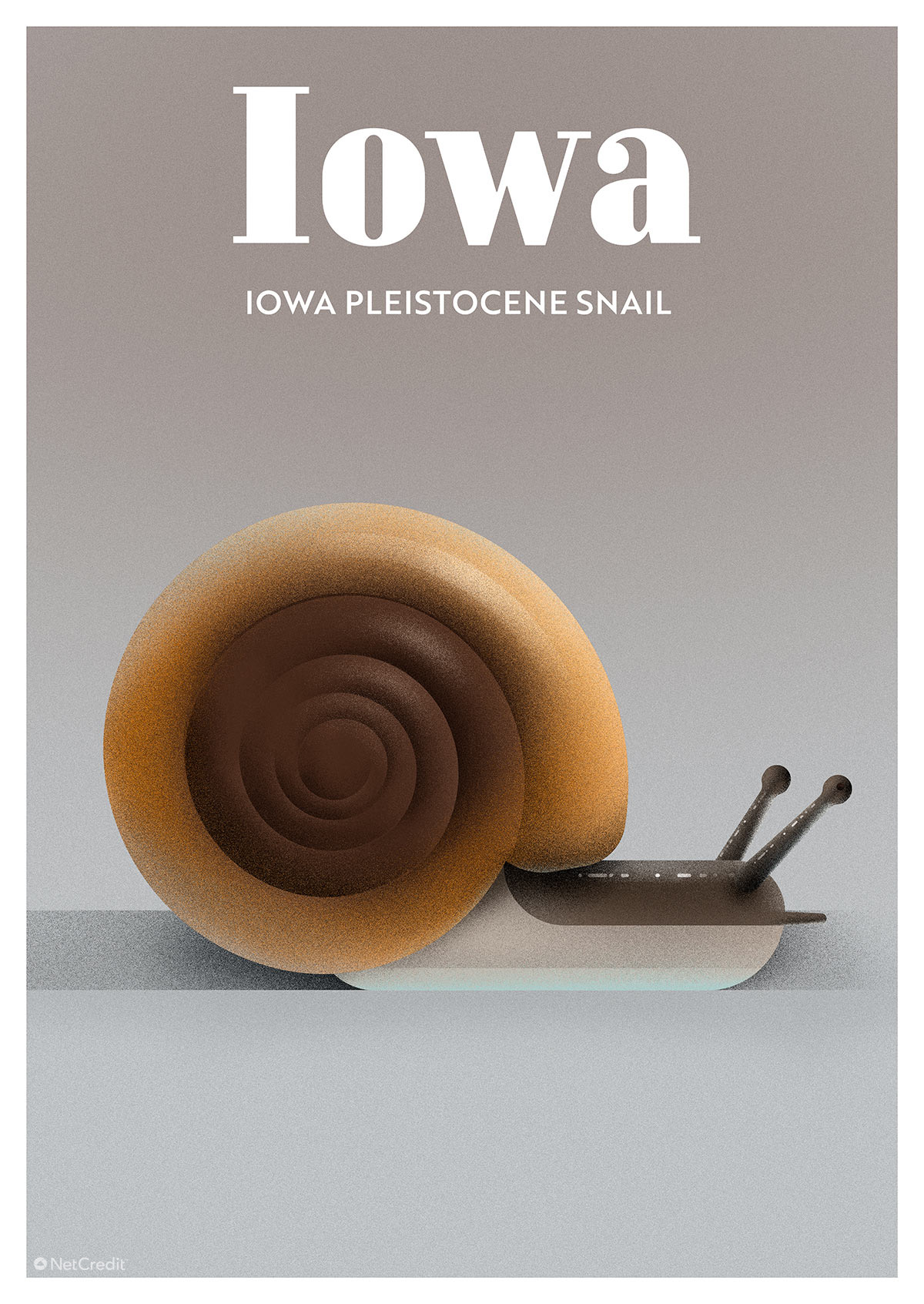
The problem is hinted at in the snail’s name: it is a relic of the Pleistocene epoch, and survives only on the climate of specific, isolated algific talus slopes that formed tens of thousands of years ago. You have to admit, the little dinosaur has heart!
16. Kansas: Neosho mucket
Sometimes a shell is not just a shell. The Neosho mucket is a green-brown freshwater mussel that lurks in the rivers of Kansas and Oklahoma. It is otherwise known as the Neosho pearly mussel for its waxy appearance.
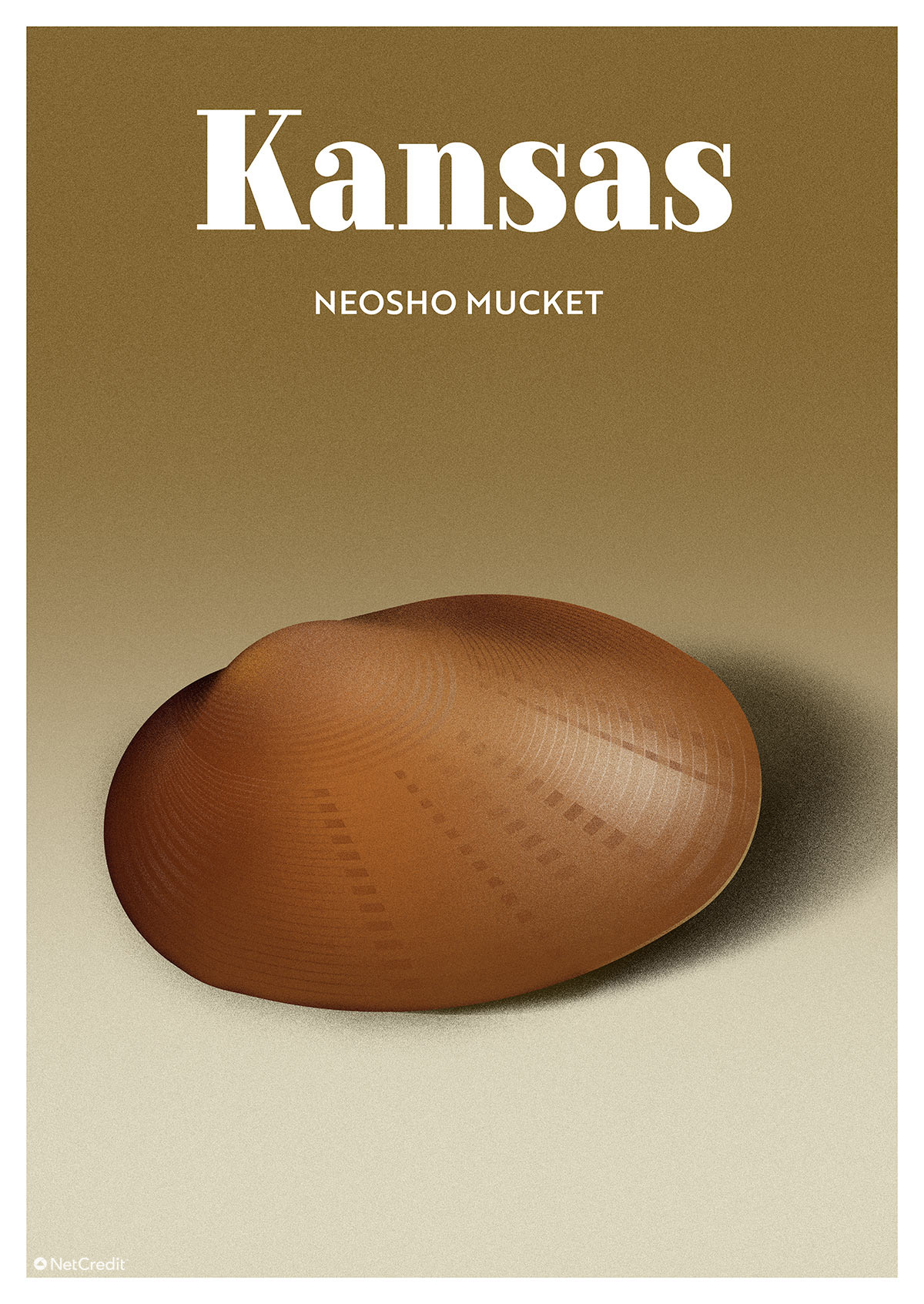
Pesticides and pollution once more seem to be responsible for the decline of the species. The construction of reservoirs has also played its part, as the depth of reservoirs affects the way the water flows and the depositing of sediment on the waterbed.
17. Kentucky: Kentucky arrow darter
The arrow darter is a five-inch fish who lays its spawn just under the surface of the water, and will defend it (unusually, for a fish) if attacked. But its true foe is at work on a much bigger scale: the coal, oil and gas industries have disturbed and polluted the Kentucky arrow darter’s waters.
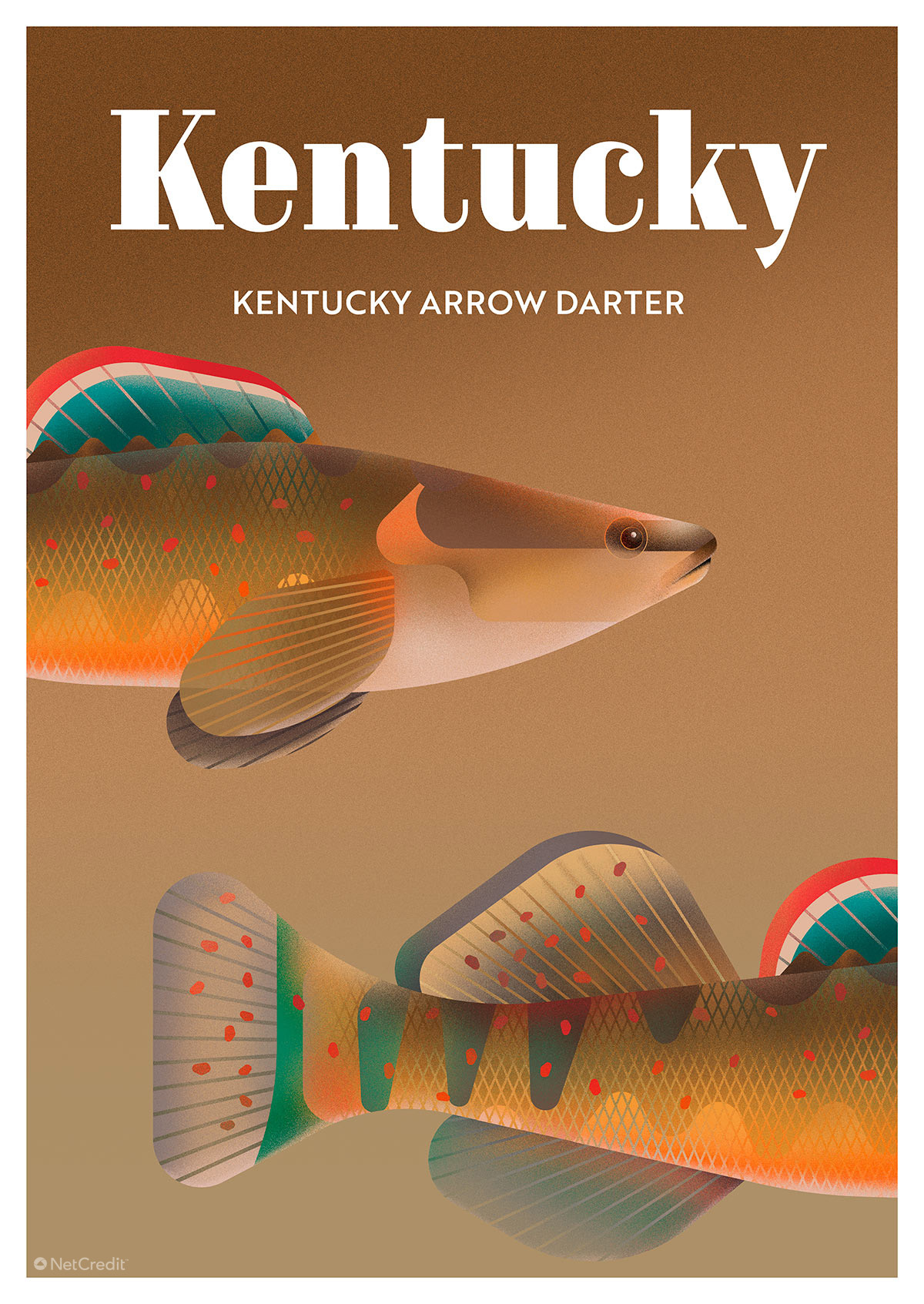
It isn’t difficult to spot a darter if it’s there: it is a shiny greenish-yellow color, and develops a suit of blue, orange and red spots and stripes to attract a mate. Only limited steps have been taken to protect the fish, who now survives in fewer than half of Kentucky’s streams.
18. Louisiana: Louisiana pine snake
This pointy-nosed snake grows up to a meter and a half long – but is non-venomous. That said, if you happen to be a gopher then you don’t want to pass a pine snake in a dark burrow, since it will expand its body to crush you against the wall before devouring you.
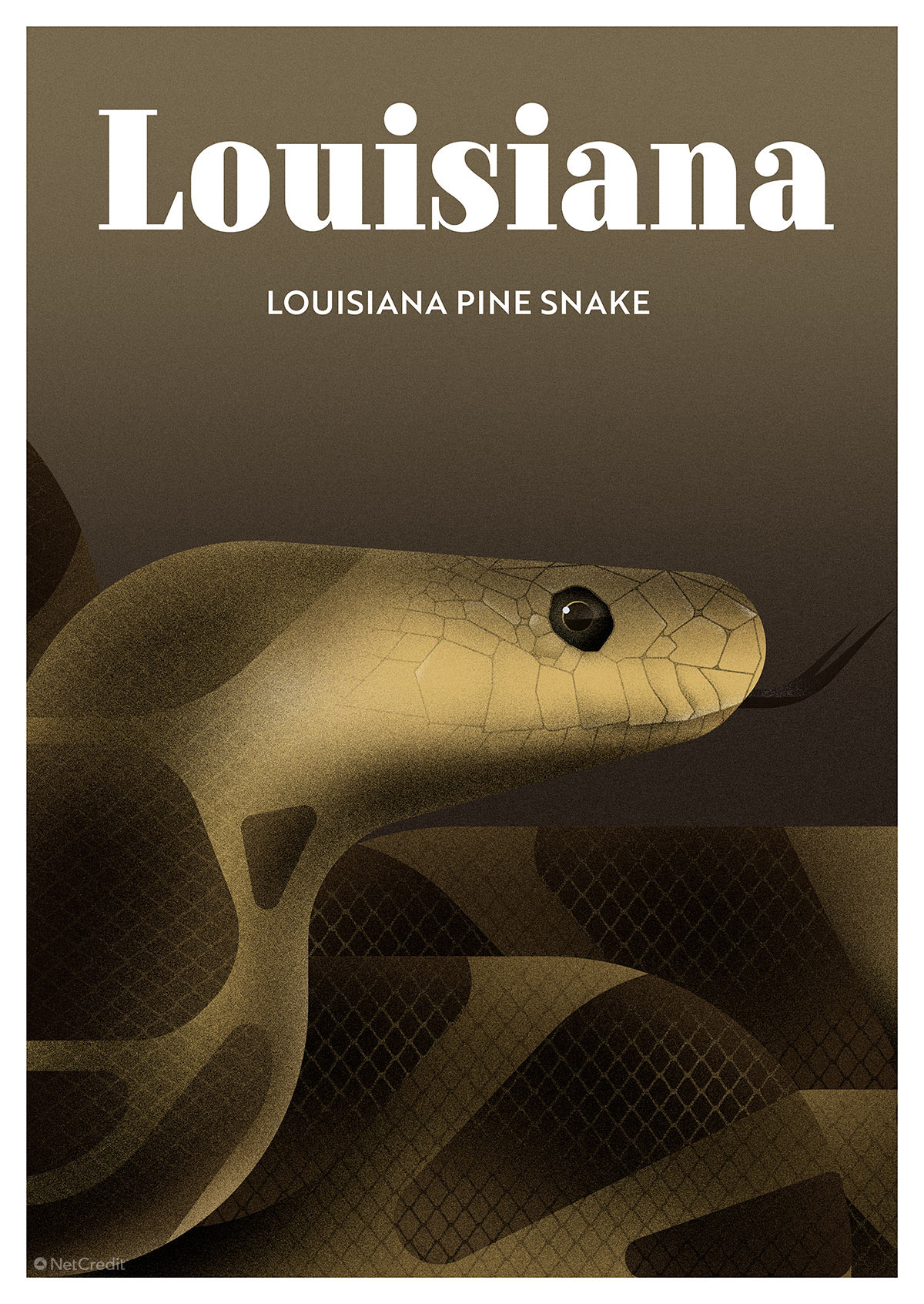
The logging of pine forests has robbed the Louisiana pine snake of its natural habitat. Ironically, fire suppression is another problem, since fire can help clear space for the longleaf pine to flourish. Conservationists reckon there are just a few thousand of the snakes left, in a dramatically reduced habitat.
19. Maine: New England cottontail
This tiny, very cute bunny is another victim of habitat fragmentation. It is much easier for predators to pick them off when they have a smaller space in which to run.

It is actually the development of forests in the region that is responsible for much of this fragmentation. Cottontail numbers have fallen by more than 80% since the 1960s.
20. Maryland: Maryland darter
Maryland’s only endemic (meaning it only lives in Maryland) vertebrate is a shy beast. This freshwater darter wasn’t ‘discovered’ until 1912, and was barely seen again until searches were made in the 1960s. The last sighting was thirty years ago.
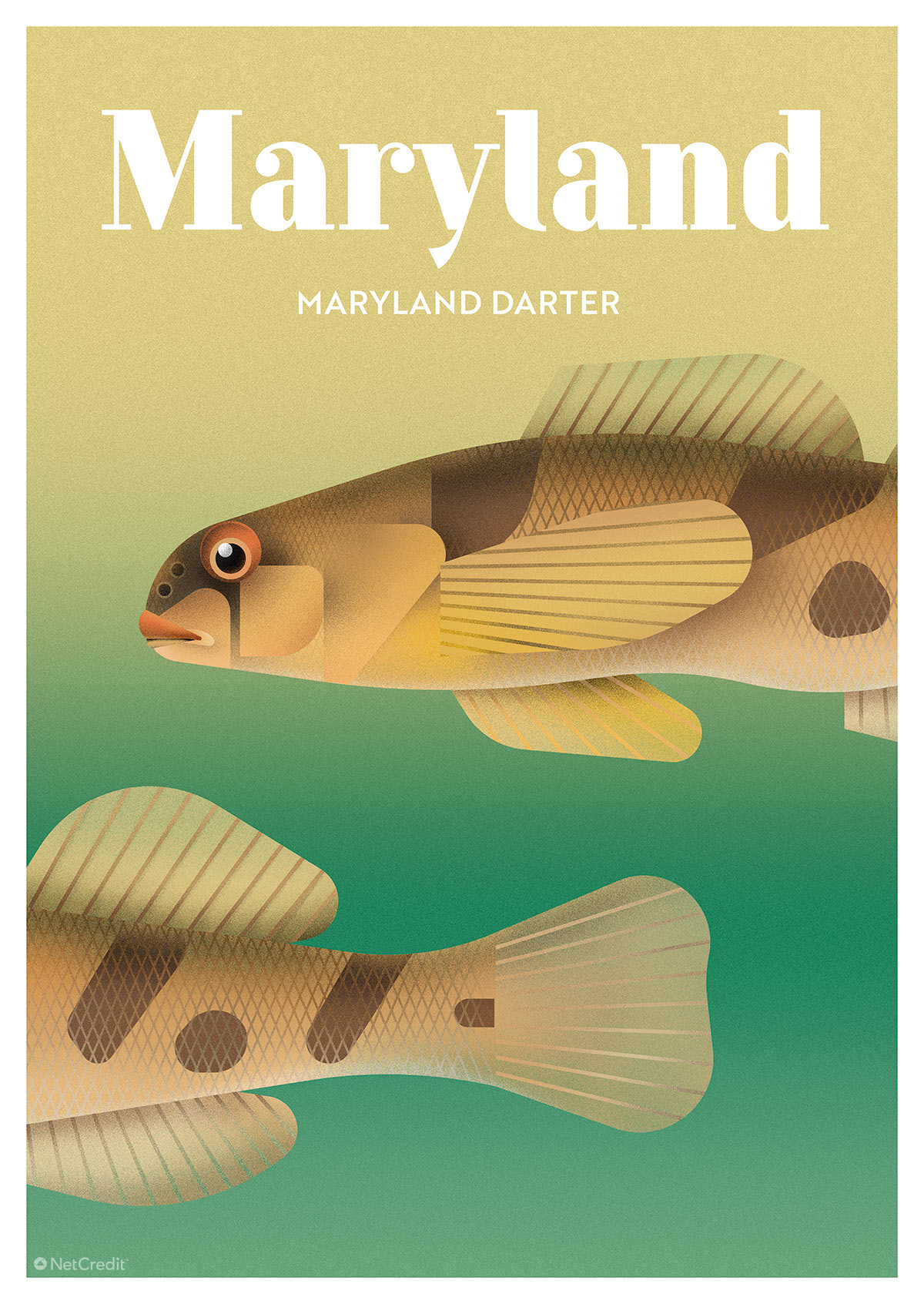
Today, experts are divided as to whether the Maryland darter can truly be considered extinct. It lived or lives in the fast-flowing ‘riffles’ and thrives on clean water, so its continued existence through the fast-developing 20th-century would have been a challenge at the very least.
21. Massachusetts: Humpback whale
The 40-ton humpback whale is just about the size of a bus, which didn’t stop whalers hunting 90% of their number to near-extinction throughout the 20th-century.
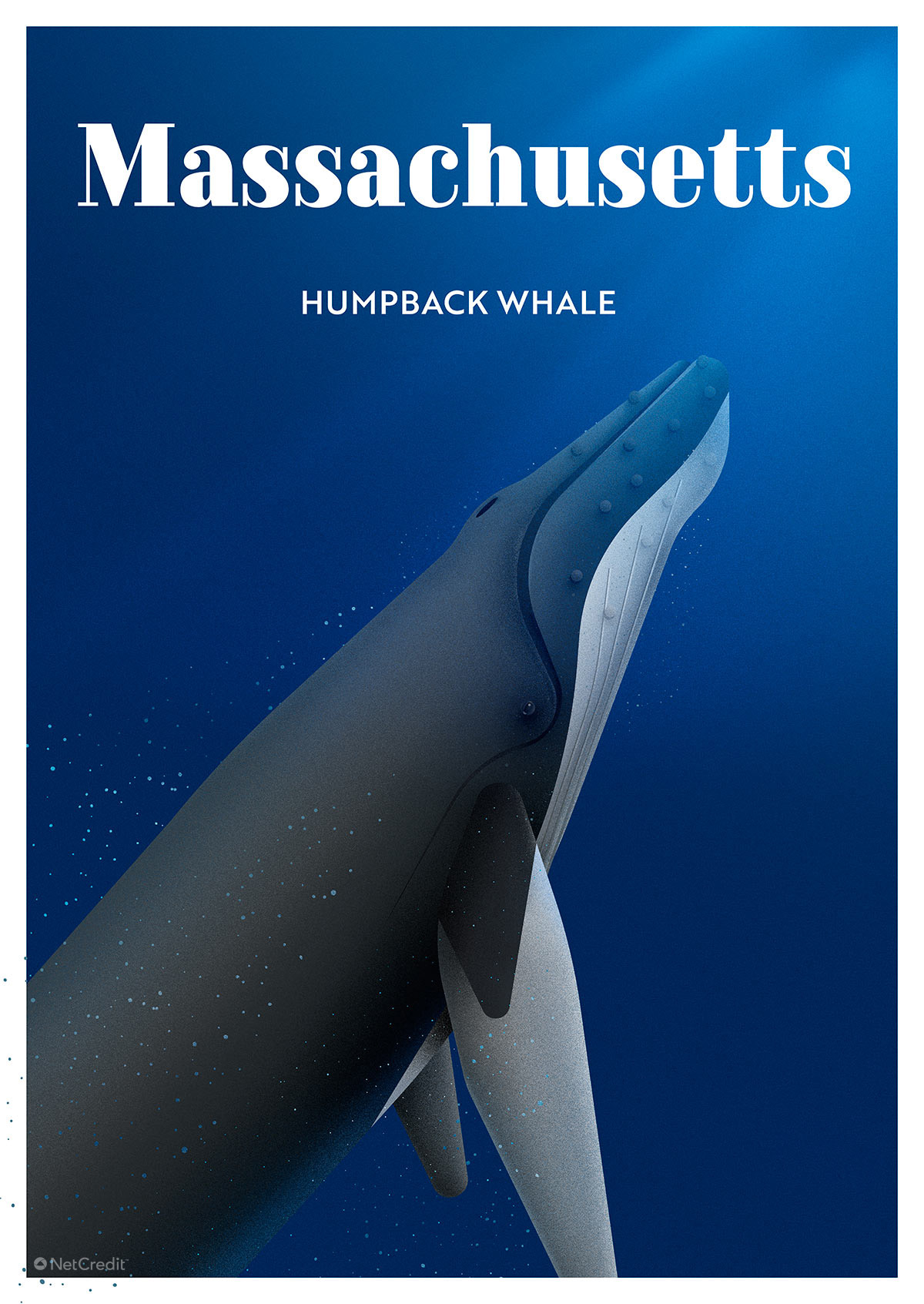
The behemoth last hit the headlines just a few weeks back, when a two-year-old humpback washed up dead in Cohasset, near Gloucester in Massachusetts.
22. Michigan: Kirtland’s warbler
Michiganders nurture a close affection for their native warbler. The bird is instantly recognizable – when seen – for its yellow breast and heavy black eye-shadow.
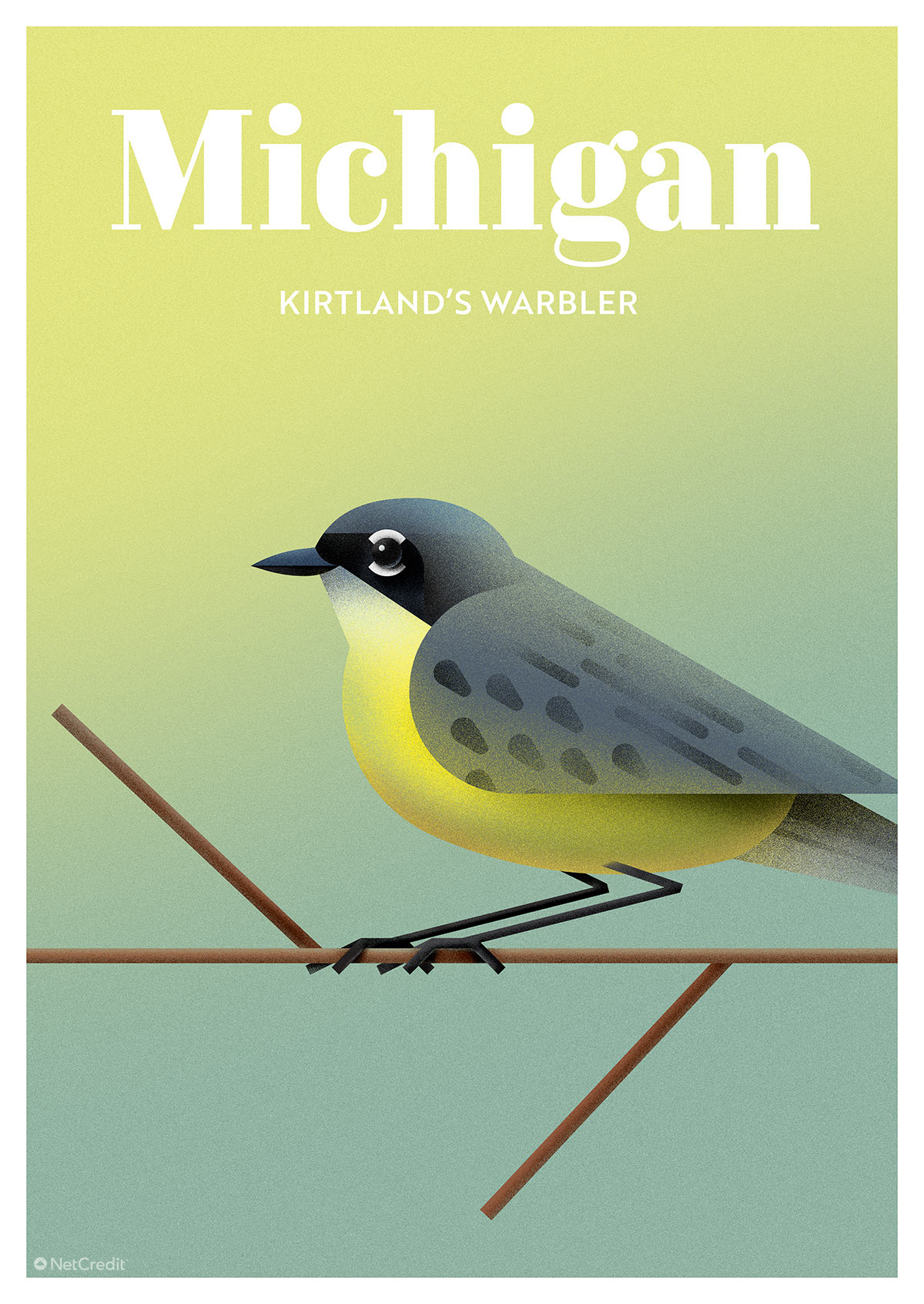
Kirtland’s warbler is making a strong comeback after a tough 20th-century, when fire suppression prevented the recurrence of young jack pines essential to the warbler’s habitat.
23. Minnesota: Rusty patched bumble bee
Rusty patches get their name from the appearance of the workers and males of the species, whose patch is on their back. Like bees around the world, their numbers have plummeted due to the reduction of pollen sites thanks to intensive farming and climate change.
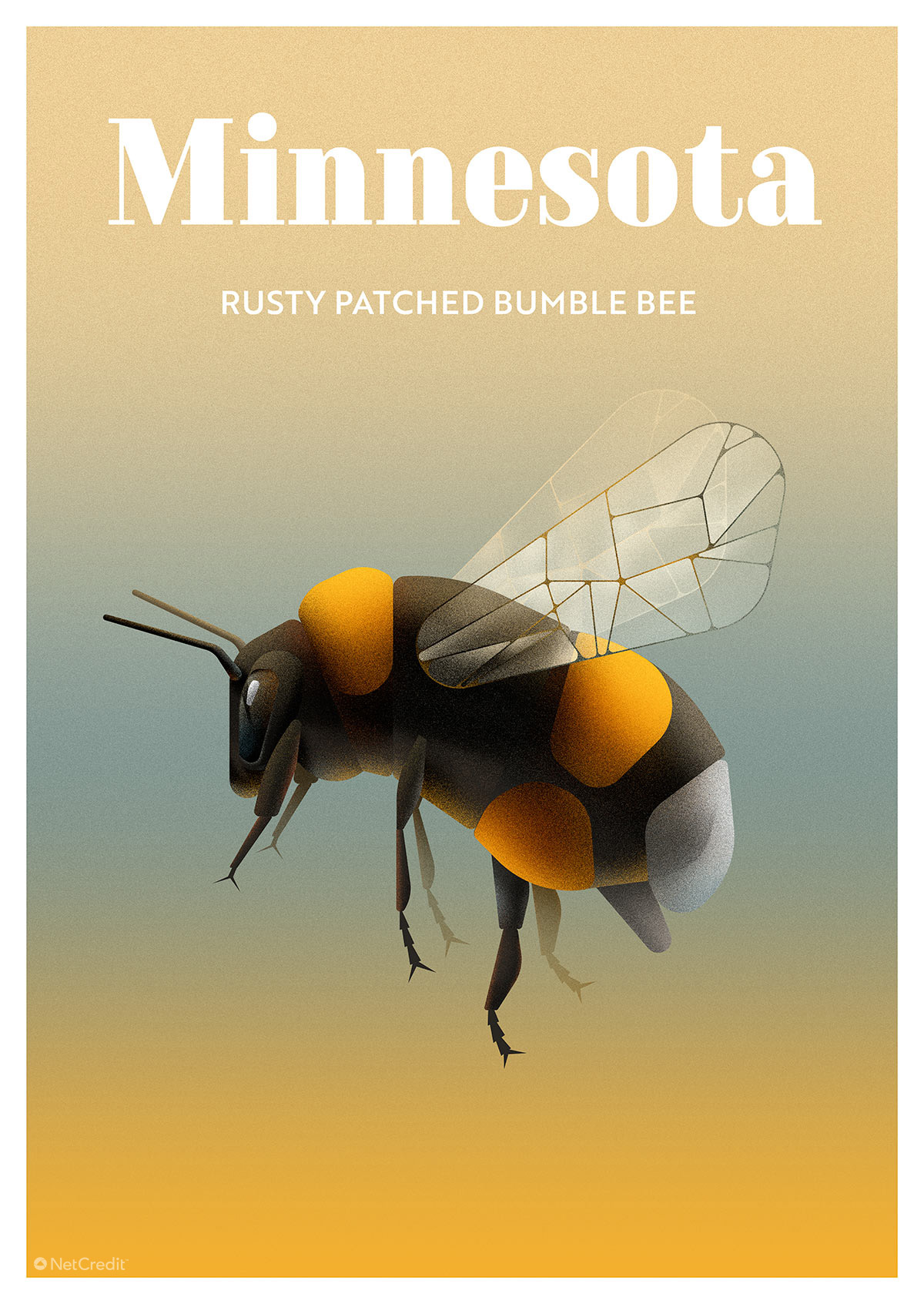
Bees are vital to our ecosystem since they pollinate the plants that many other creatures rely on for survival. It’s reckoned bees do $3billion of work each year in the states! You can give something back by using native plants in your yard, leaving spaces to grow naturally and adding flowering plants to your garden.
24. Mississippi: Mississippi sandhill crane
There are just 100 Mississippi sandhill cranes remaining, all of whom live on or near the Mississippi Sandhill Crane National Wildlife Refuge. They used to range as far as southern Louisiana and right down to the west of the Florida panhandle.
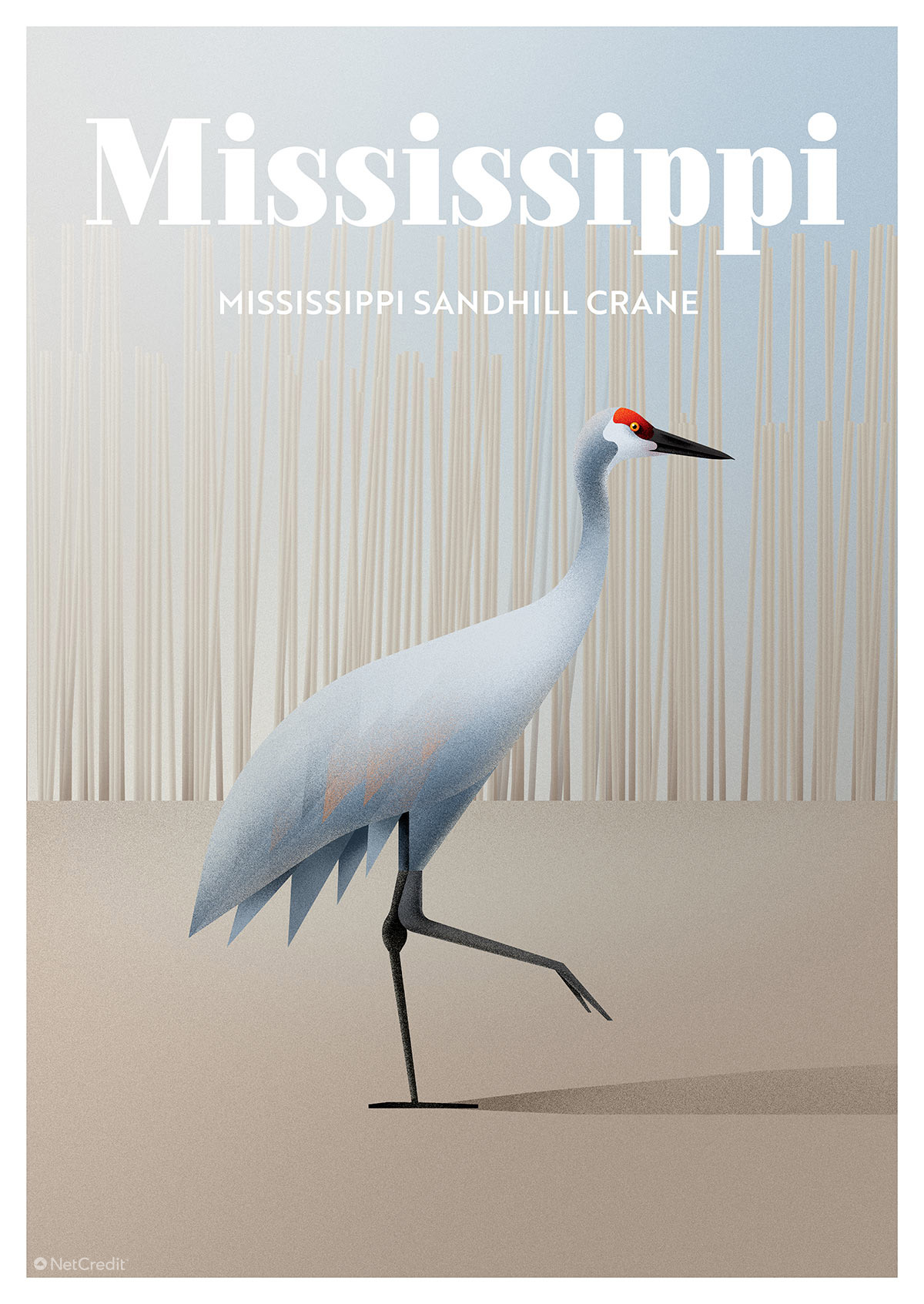
The four-foot bird, with an astonishing seven-foot wingspan, has a stunning red crown and white cheeks, as though painted. There were so many of them in the 19th century that they were considered a pest, but post-war conversion of open pine savanna to pine plantations disrupted their natural habitat with tragic consequences.
25. Missouri: Ozark hellbender
This salamander earned its name due to an excessively curved shape and skeleton. The oldest-known hellbender is thought to have live to the age of 55. They breathe through their skin, spend their days resting under rocks and walk the stream-bed at night hunting for crayfish and insects.
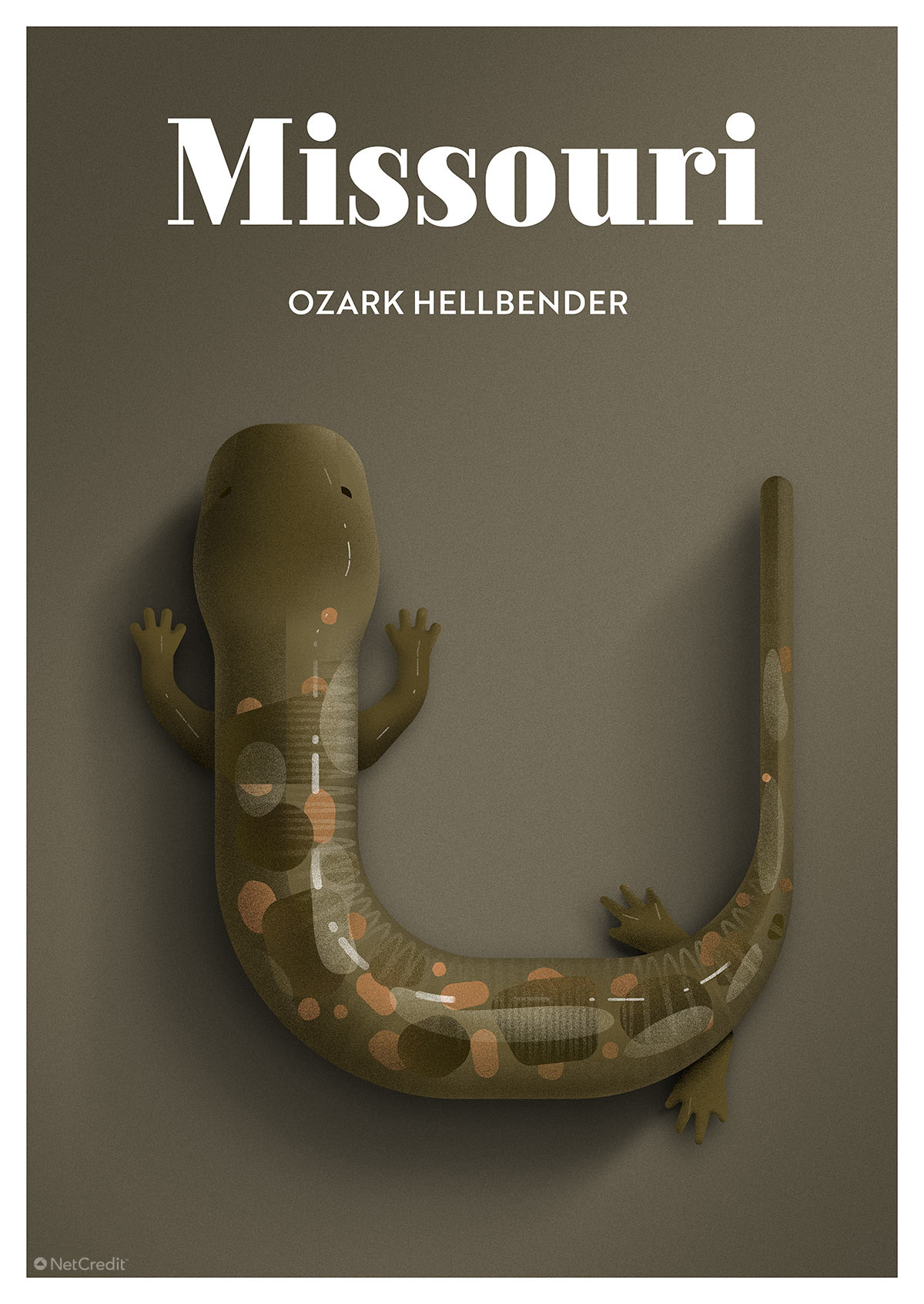
Today, hellbenders can count only a quarter of the number they boasted in the 1980s. Habitat loss, spoiled water and poaching are among the causes of their decline.
26. Montana: Whooping crane
In the mid-19th century, over 1,000 ‘whoopers’ dwelt in the prairie marshes of northern America and the south of Canada. Now there are less than 320 left in the entire world. Once again, human settlement took its toll, with agriculture and hunting nearly wiping the red-crowned fishing bird out by the 1940s.
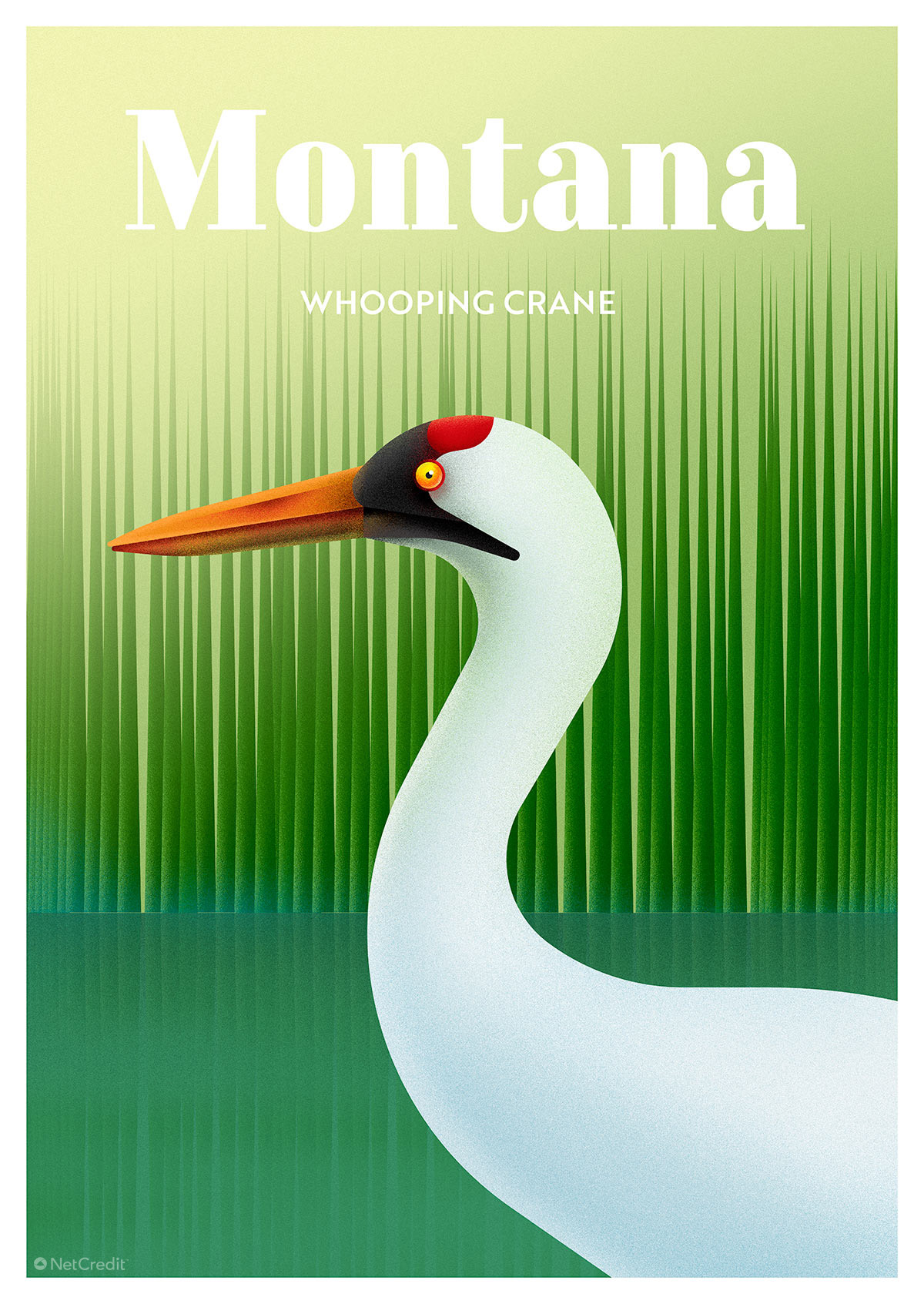
A partial recovery hasn’t been helped by the whooping crane’s rather reluctant mating patterns. A female may produce just one chick every two-three years. Their perilous habitat means it’s not unlikely that the chick will quickly be lost to predators, power lines or the cold.
27. Nebraska: Salt creek tiger beetle
This handsome, olive green or metallic brown beetle is hardcore: it spends 11 months a year underground, and hangs from abdominal hooks before extending from them to chomp innocent invertebrates with its alien mandibles.
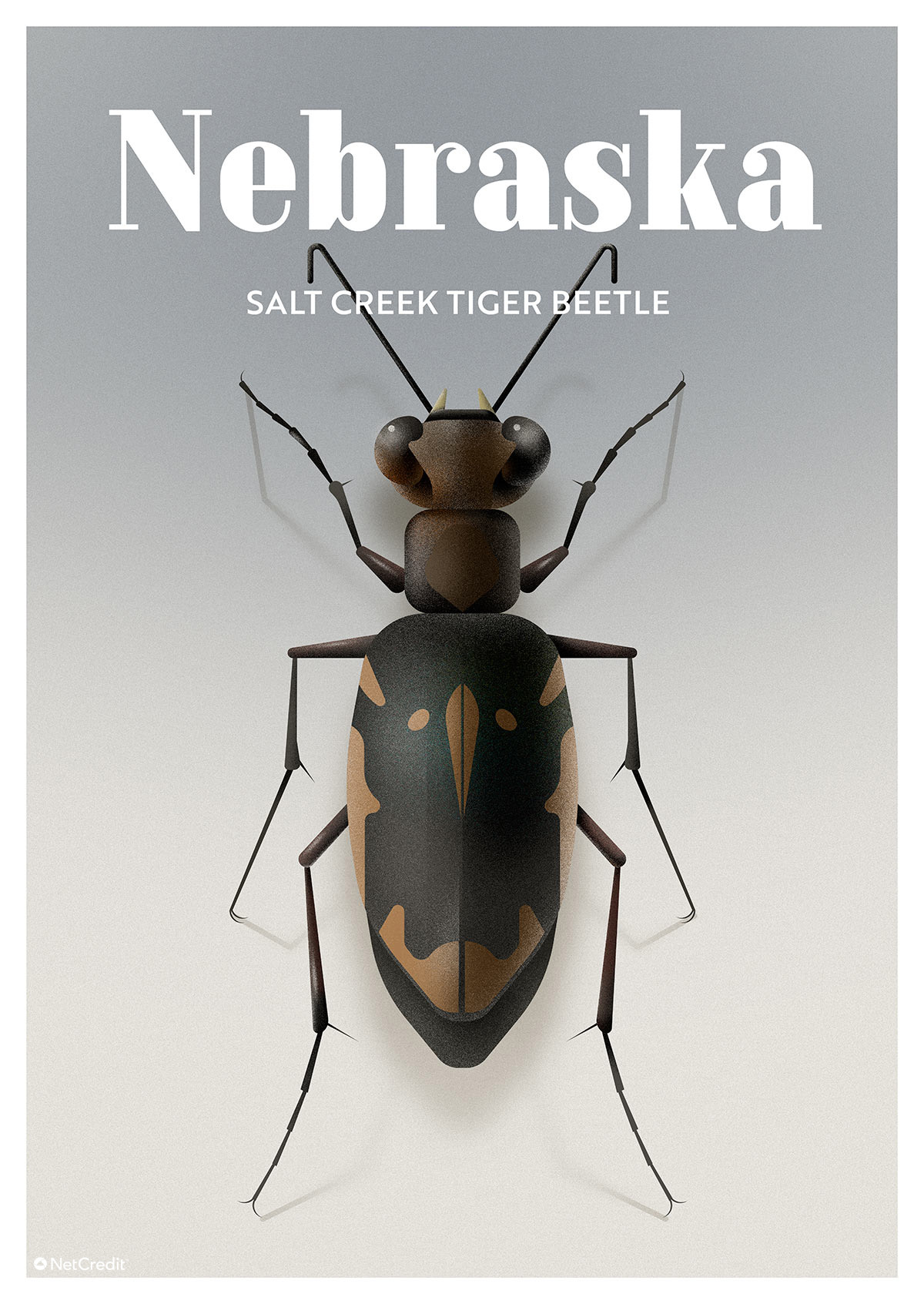
But being iridescent and tough has not been enough to save the beetle from the effects of pollution, pesticides and the effects of urban development. It is estimated that the beetle’s population has halved since 1991.
28. Nevada: Mount Charleston blue butterfly
Fire is one of the Mount Charleston blue butterfly’s worst enemies. The insect was already having a hard time when the Carpenter 1 fire spread across their home mountain in the summer of 2013. That’s when she was added to the endangered list.
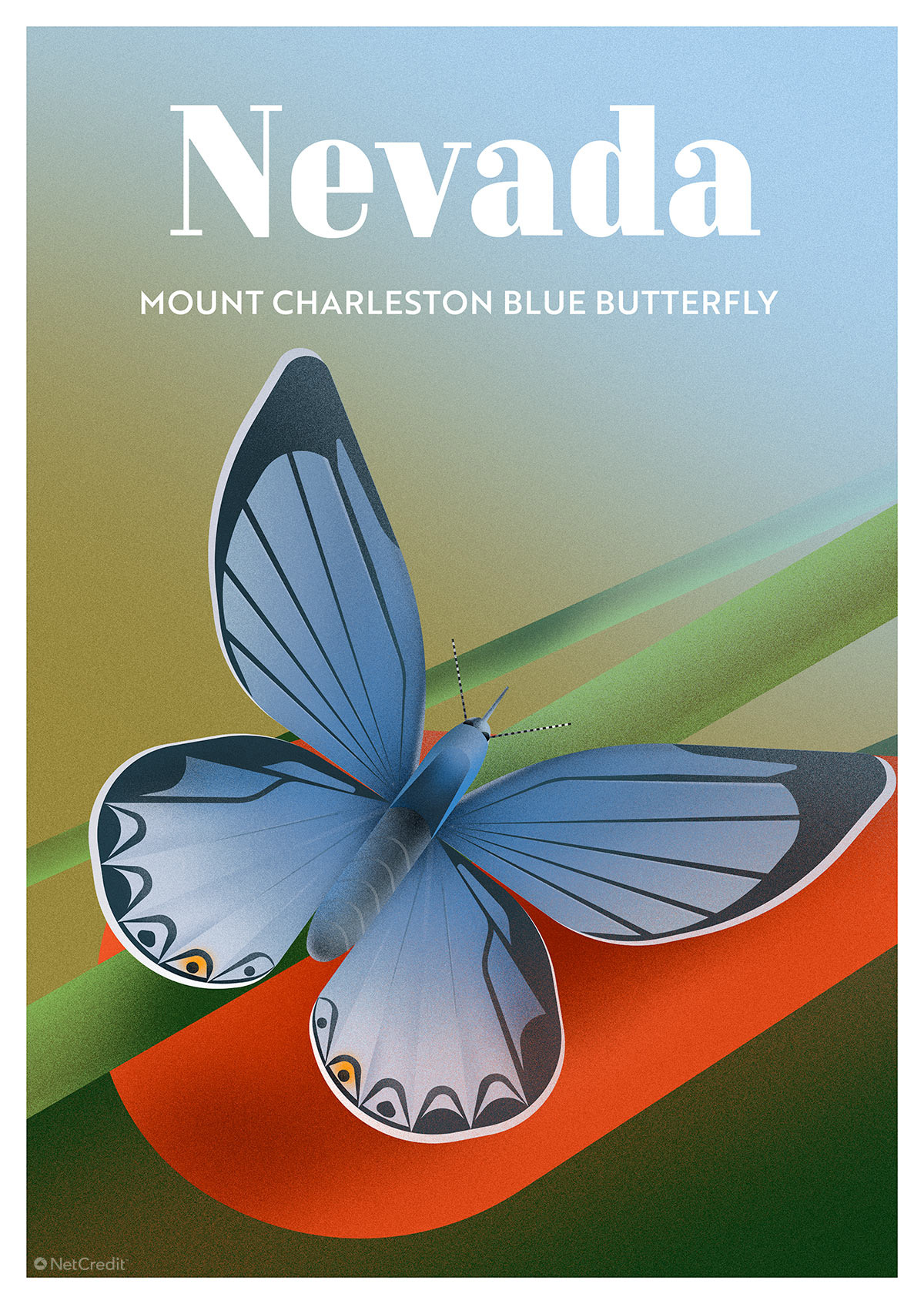
Researchers believe the shimmering blue-and-gray or blue-brown butterflies may be increasing in number following the planting of nectar plants in their habitats. But with more and more fires blazing through the American outdoors every year, the Mount Charleston butterfly is far from safe.
29. New Hampshire: Blanding’s turtle
The yellow-throated turtle with the Berndorfer shell can live up to seventy years in ideal conditions. Habitat loss in urbanized areas has led to their decline.
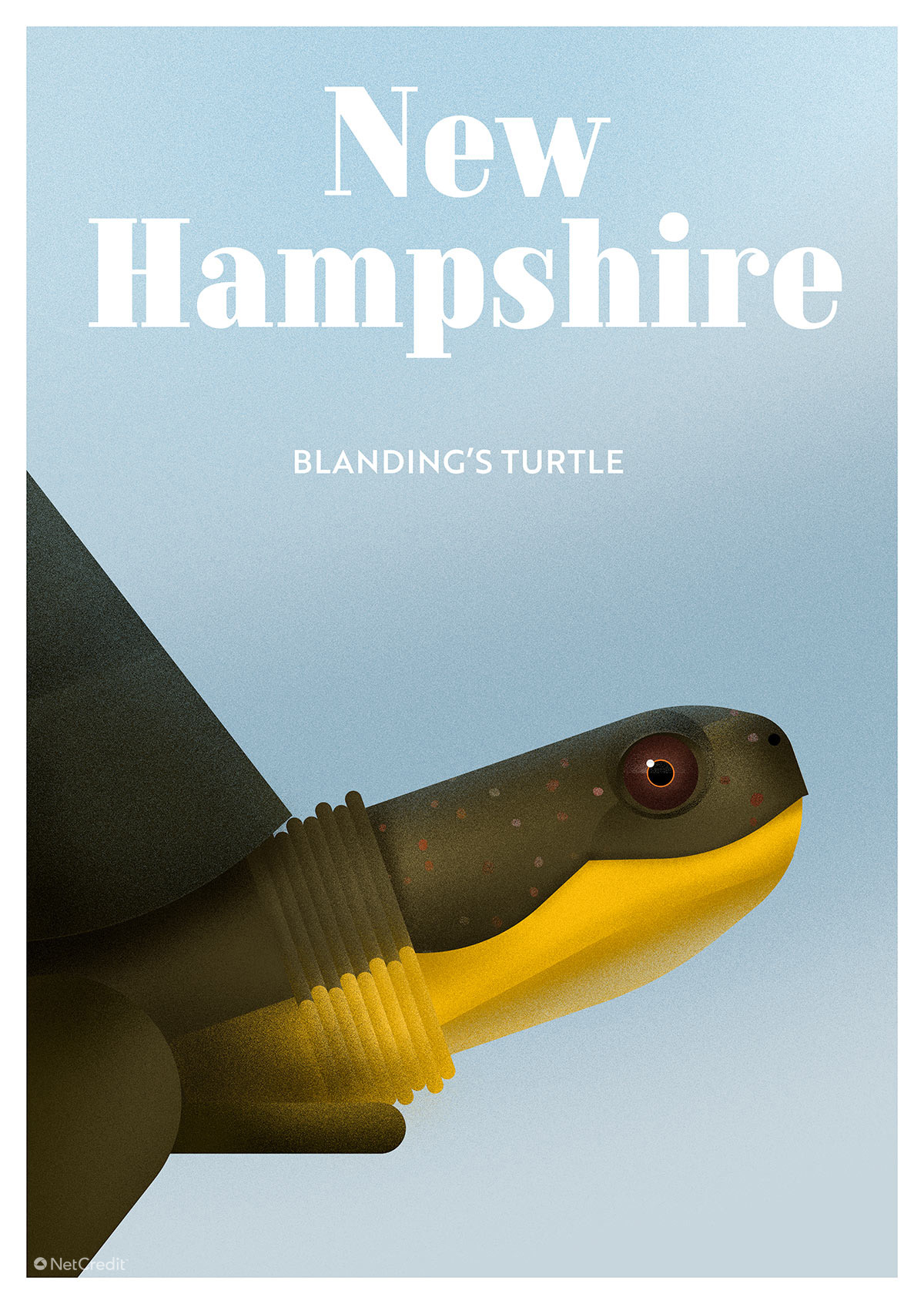
Blanding’s turtle likes to wander, and may nest in disturbed soils, pastures, power line corridors, and gardens, given the opportunity. Reptile conservationists are working to map the turtle’s movement patterns and designate protected areas to give them a shot at survival.
30. New Jersey: Sei whale
It wasn’t until 1987 that commercial whaling of this 60-foot baleen whale came to an end. They swim deep and far from coastlines, and have not been spotted in New Jersey recently – although, despite their size, it’s hard to tell if they’re there!
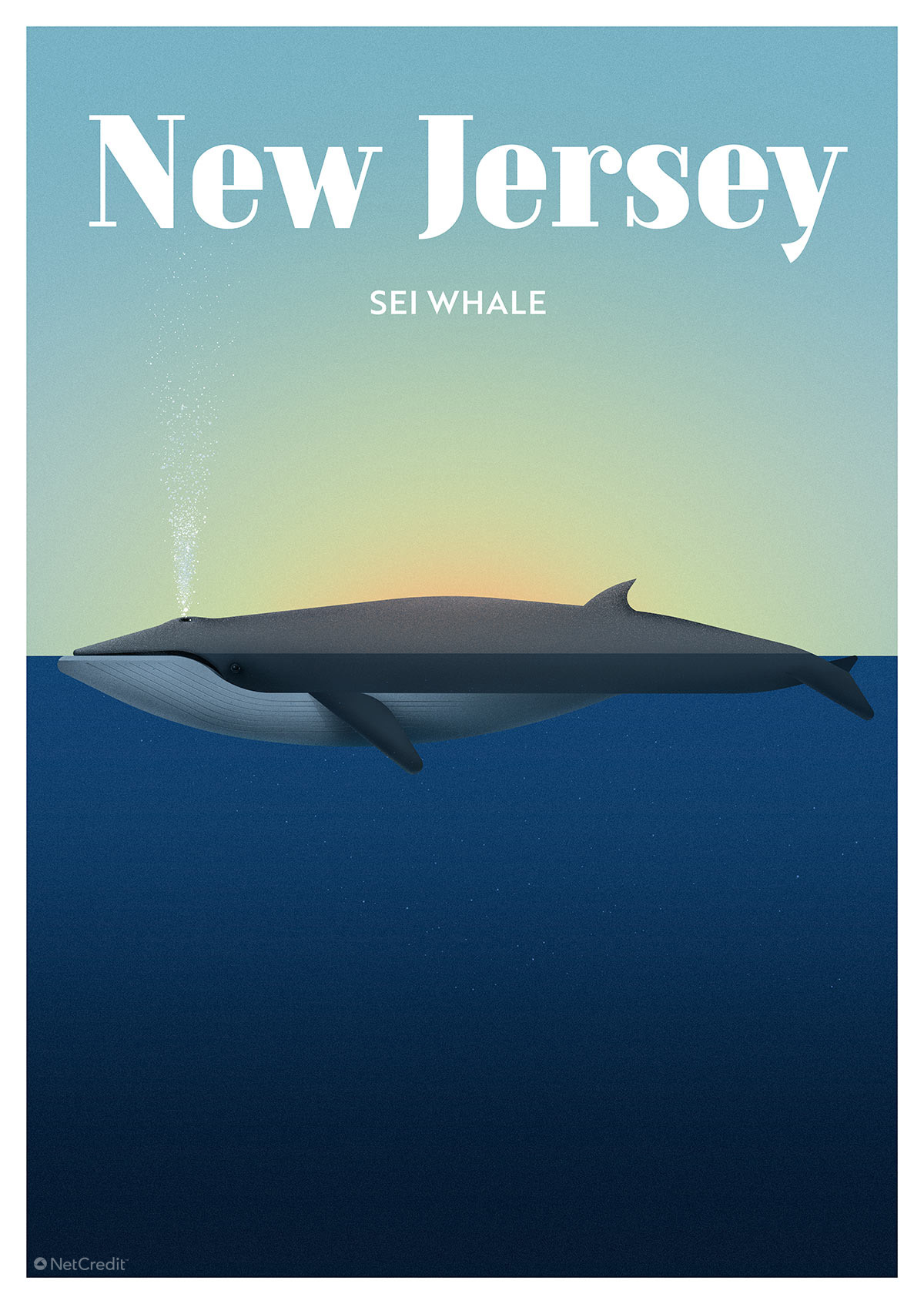
Similarly, it is difficult to know if the sei whale is now recovering from its depleted numbers. They still get caught up with boats and fishing gear, while the noise from shipping and other man made disturbances such as naval sonar can be disturbing and damaging to these massive creatures.
31. New Mexico: New Mexico meadow jumping mouse
The jumping mouse is a ginger-colored critter with a white belly, who lives mostly by night. Its relatively large back feet enable the mouse not just to jump distances of up to three feet, but to swim. It’s rarely found far from running water.
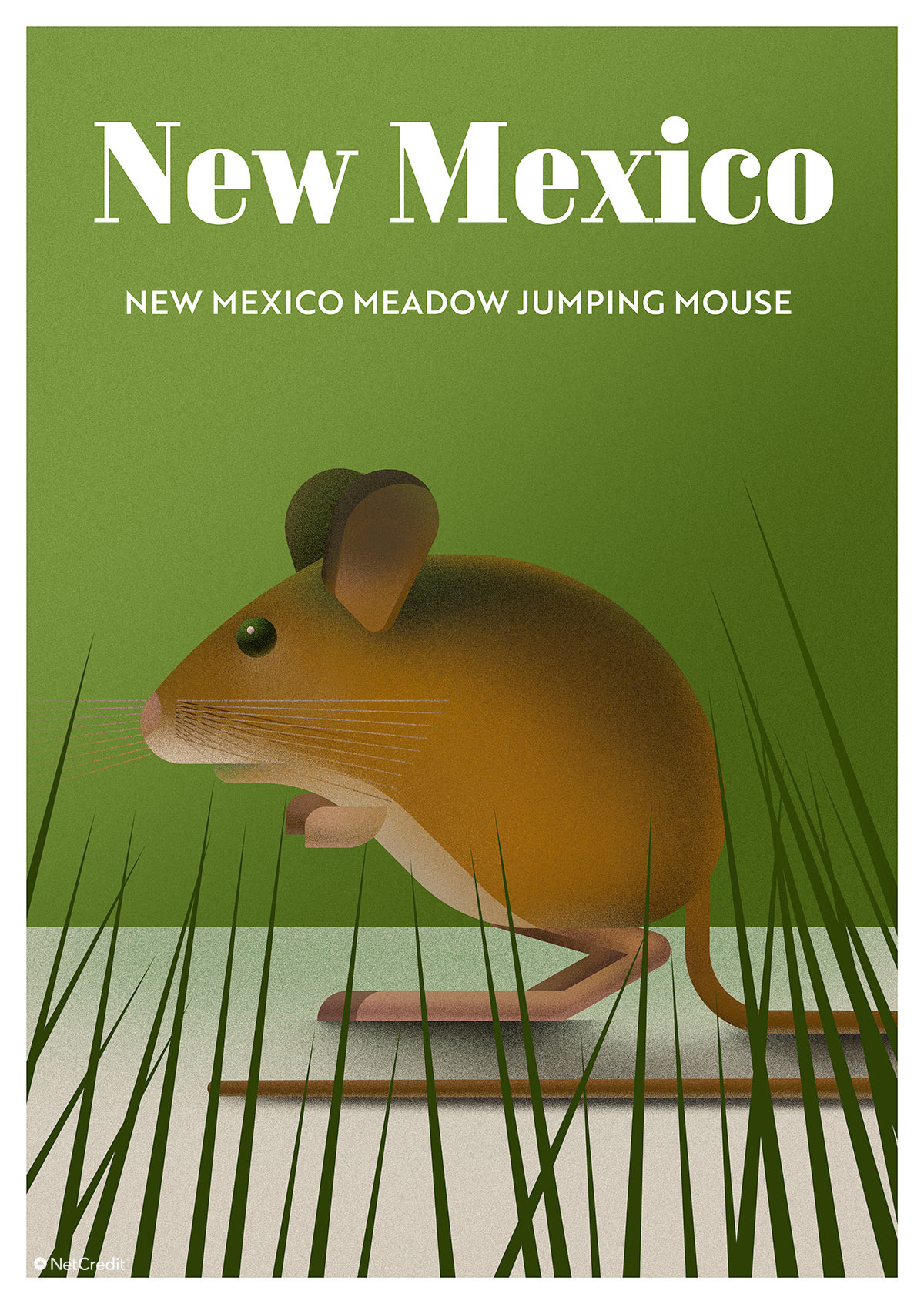
Humankind’s impact on the jumping mouse’s environment has been devastating. Livestock has trampled or eaten its way through their habitats. The declining beaver population – due to trapping – has robbed the jumping mouse of its natural ally in home-building.
32. New York: Eastern massasauga
New York State’s smallest venomous snake has suffered from post-glacial changes in the region, pushing it into smaller and smaller areas. And then along came people to hunt and collect it.

We also have a habit over over-zealously defending ourselves by killing the snakes on sight – although only one or two people are bitten by the eastern massasauga each year, and deaths are very rare.
33. North Carolina: Carolina northern flying squirrel
This ice-age flying squirrel became separated from other populations as the region around the Southern Appalachians thawed. Today, it can only be found in North Carolina, Tennessee and southwest Virginia.
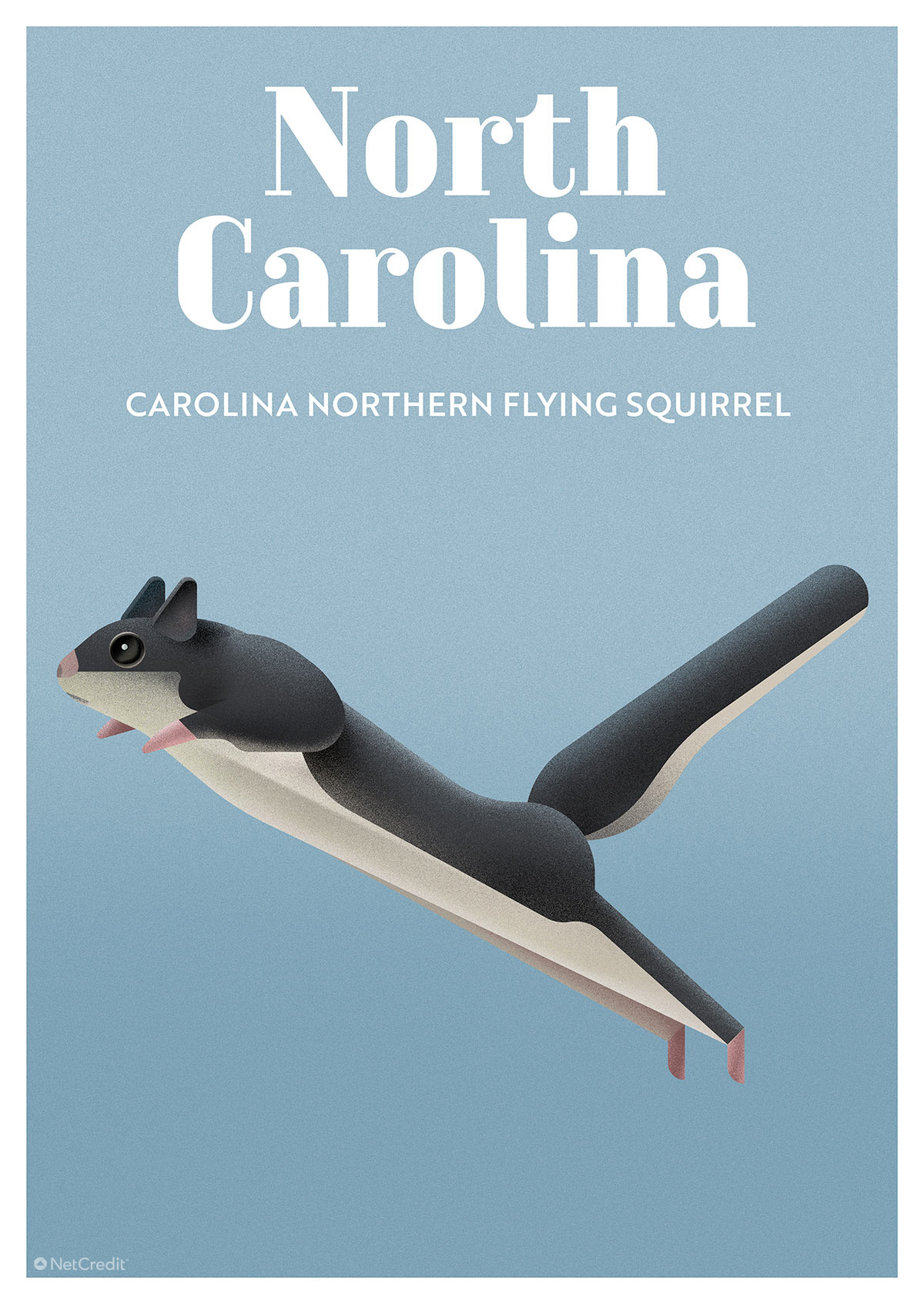
The clearing of forests in these areas allowed new pests such as the balsam woolly adelgid to enter. In addition to this, pollution and climate change are harming the Carolina northern flying squirrel’s hopes for survival.
34. North Dakota: Least tern
Development along the Missouri River has disrupted the living space of the least tern (literally the smallest of the tern family), and altered the fish population, affecting the bird’s diet.
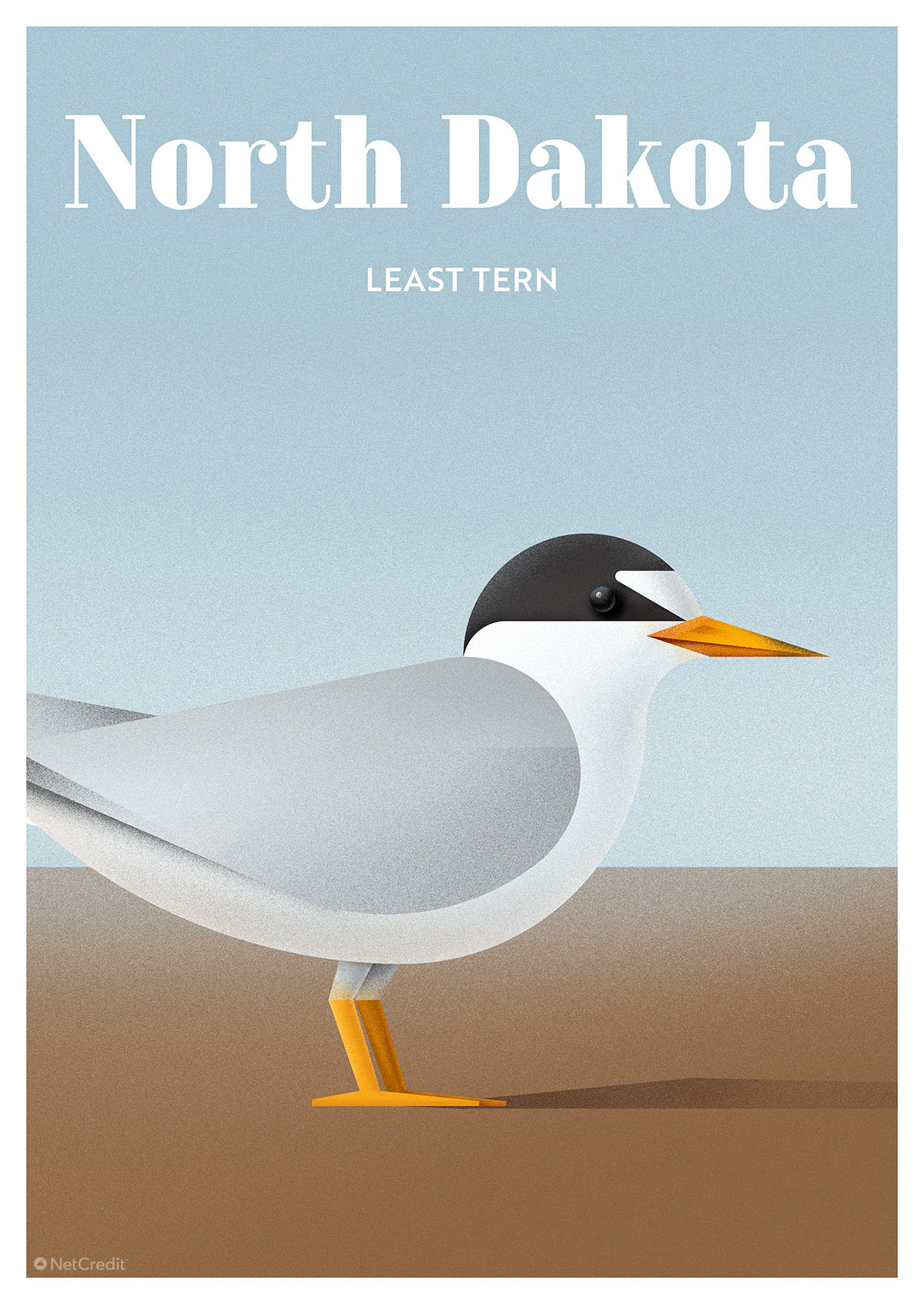
Conservationists are attempting to create artificial tern habitats and to maintain the area in a way beneficial to their needs. There may be as few as 100 breeding pairs left in the state.
35. Ohio: copperbelly water snake
The copperbelly’s red-striped tummy is a thing of beauty to behold; unfortunately, this has made the snake vulnerable to collection from enthusiasts looking for an exotic pet. But the main damage has been done by habitat fragmentation.
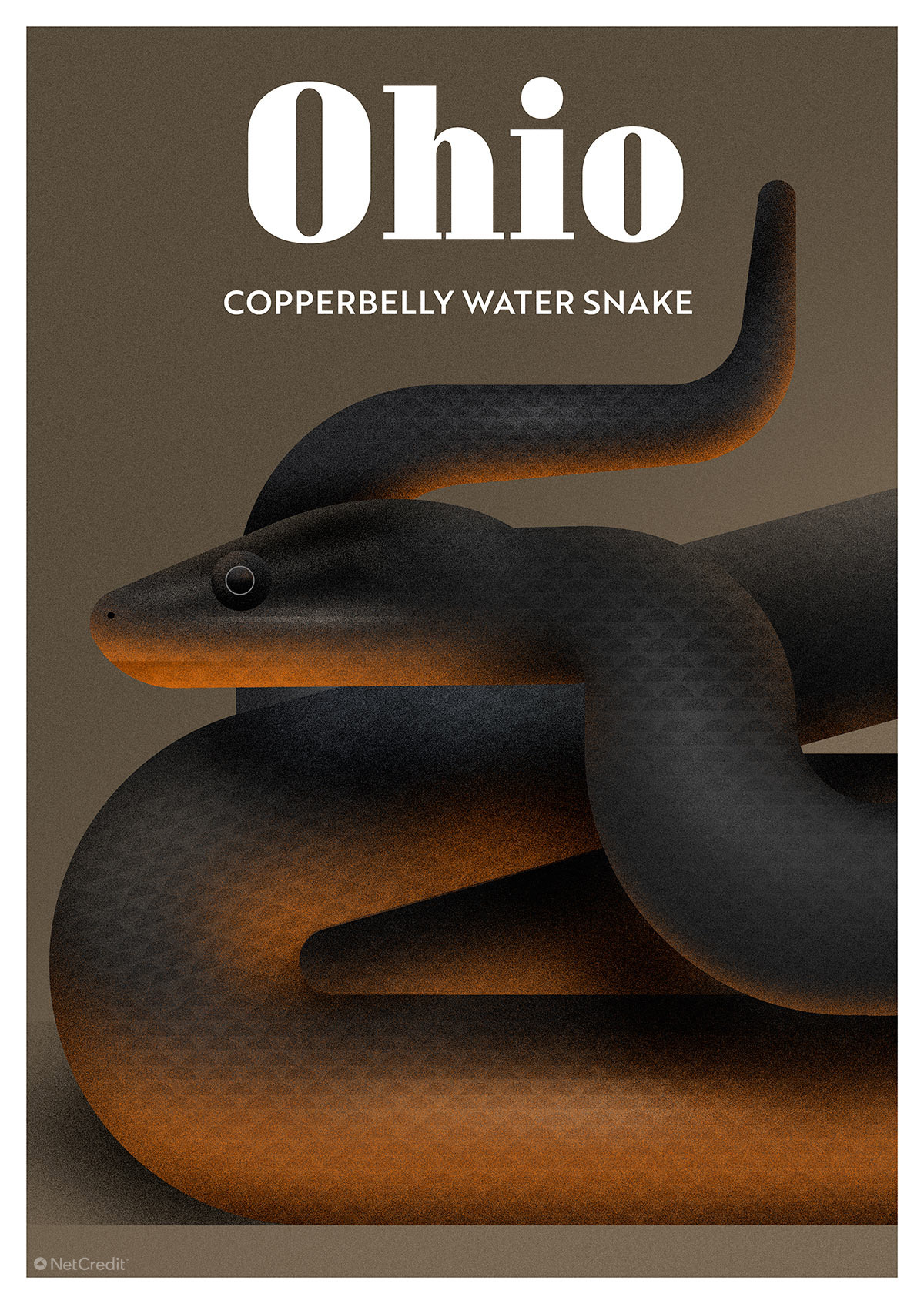
The water snake needs large, unbroken areas of water to roam. These sorts of areas have been broken up for agriculture, roads and housing. Now only around 200 copperbelly water snakes remain in the north.
36. Oklahoma: American burying beetle
Looking somewhat like the beetle version of Darth Maul, the American burying beetle’s lifestyle is suitably sinister: it feeds on dead animals and birds, and a beetle ‘couple’ will work together to bury a rat-sized carcass in which to lay their eggs.

Sadly, this reliance on fresh corpses may be the reason for the beetle’s decline. As small mammals like prairie dog dwindle in number, so do the burying beetle’s eating and mating options.
37. Oregon: Loggerhead sea turtle
The loggerhead is another giant, at least among sea turtles: 250lbs of jellyfish-and-crab-crunching carnivore in a three-foot shell. Pollution, trawling and poaching for leather and eggs have put America’s most common marine turtle on the ‘vulnerable’ list.
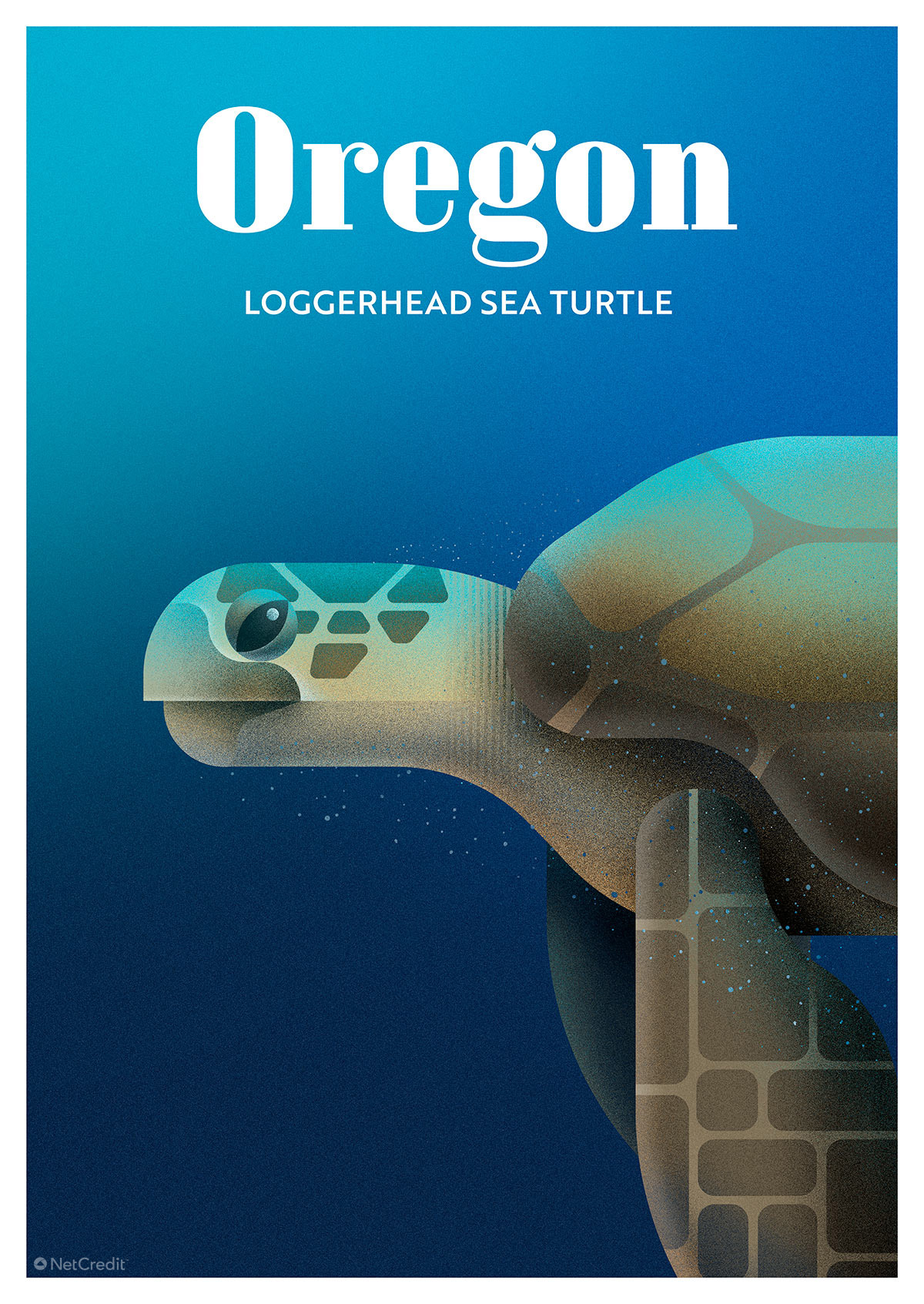
Campaigners have sought to improve fishing gear so that fewer loggerheads are caught up in nets. And communities in Florida, Georgia, and South Carolina have created special lighting systems to help baby turtles find their way back to their nests. Still, nearly 5,000 turtles a year die in American fishing nets.
38. Pennsylvania: Short-eared owl
This particularly stern-looking owl is named for its tufty ‘ears.’ They have a tendency to nest in places that look tasty to developers, such as the tall grasses around Philadelphia Airport.
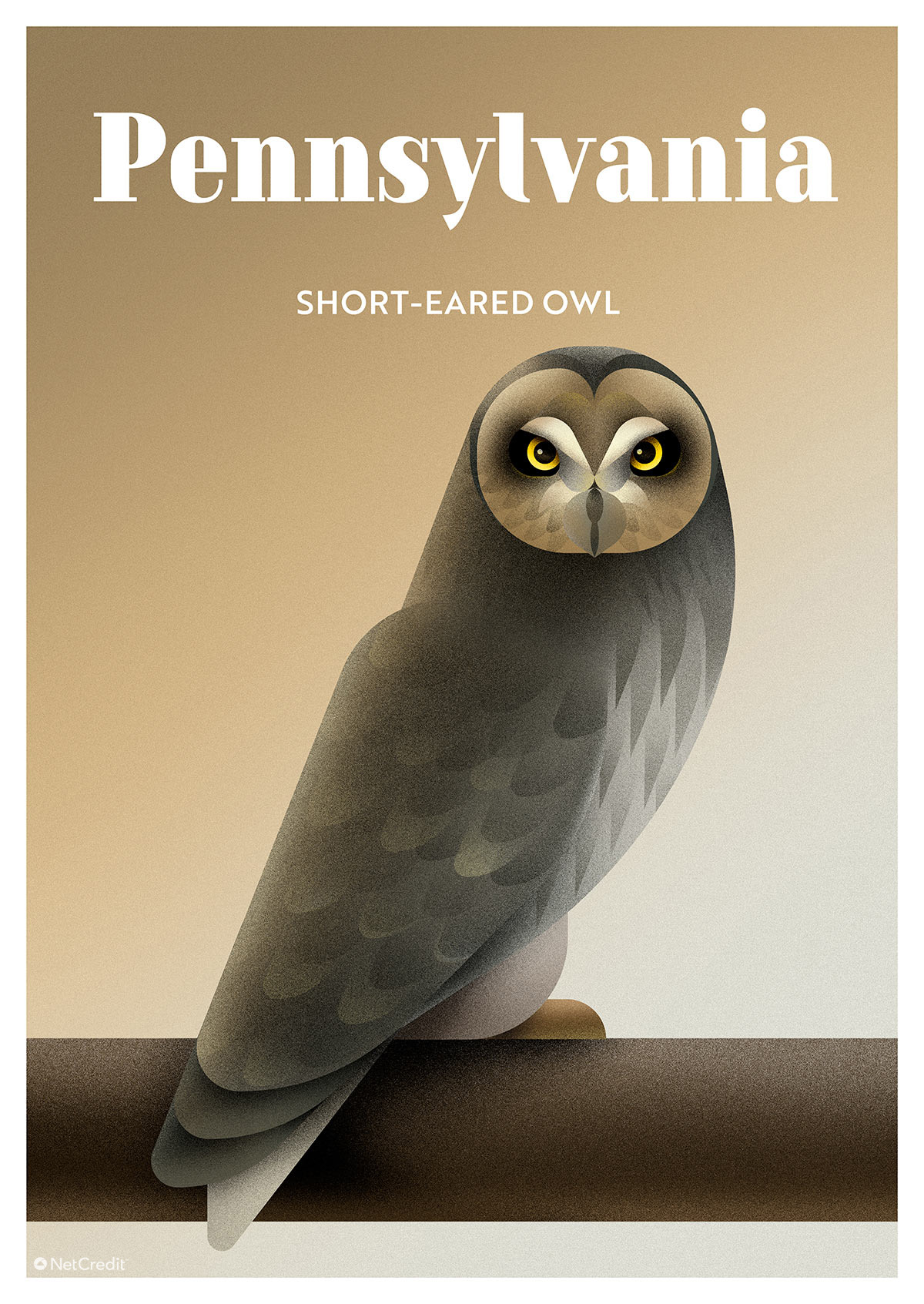
Intensive agricultural practices threaten those few remaining Pennsylvania spaces where it might make a home. There are now very few short-eared owls left at all.
39. Rhode Island: Hawksbill sea turtle
The Hawksbill’s vibrant yellow, orange and brown shell has enchanted beholders for many years. An increase in the demand and industrialization of tortoiseshell jewelry, brushes and furniture over the past two centuries, as well as the exploitation of their bones and other parts for tools and medicines, has caused their dramatic decline.
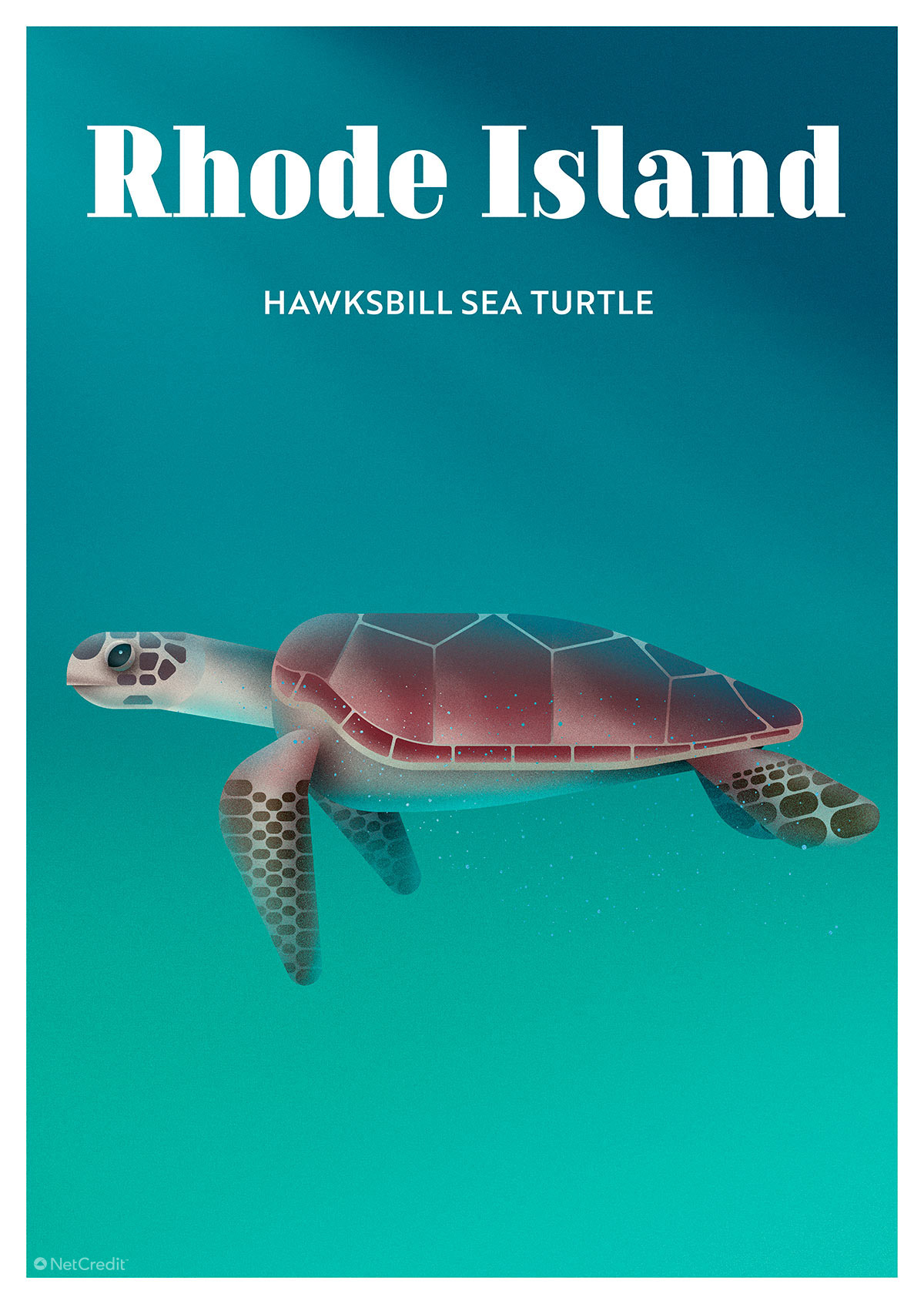
This sea turtle doesn’t begin to reproduce until the age of 25, making it tougher for the peaceful creatures to buoy their numbers. The decline is twice as tragic since the Hawksbill sea turtle is also important to the survival of coral reefs.
40. South Carolina: Frosted flatwoods salamander
The Frosted flatwood is around five inches long, with gray spots or stripes. It lives underground and only comes out in the rain or to breed in shallow pond areas.
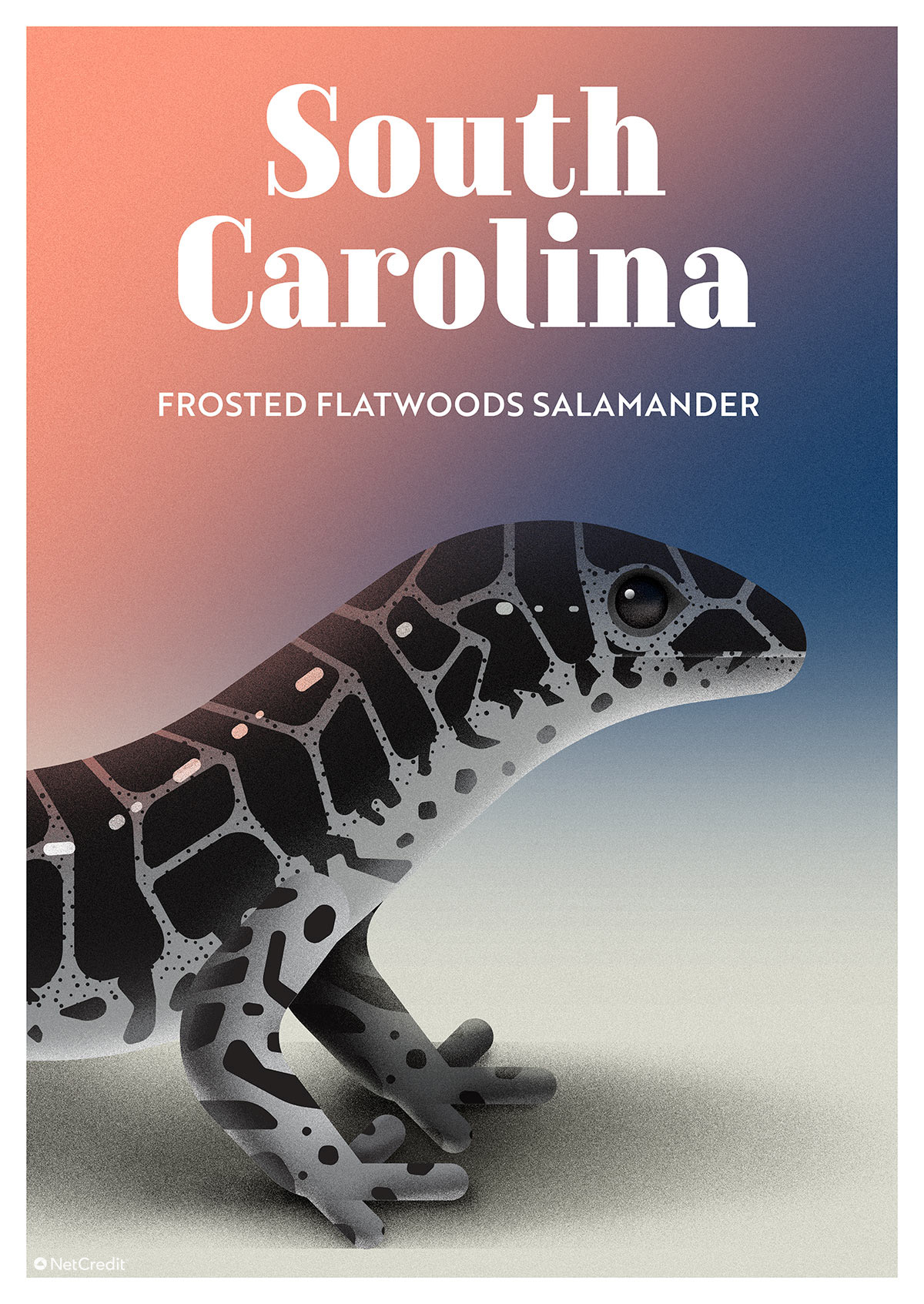
Land development by humans has left this salamander with just 20% of its original habitat. Wild fire suppression, segmentation of salamander populations and re-foresting with unsuitable trees have led the flatwood to its vulnerable status.
41. South Dakota: Black-footed ferret
North America’s only native ferret relies on the prairie dog (see number 44) for food. Dropping prairie dog numbers mean hungry times for the black-footed ferret.
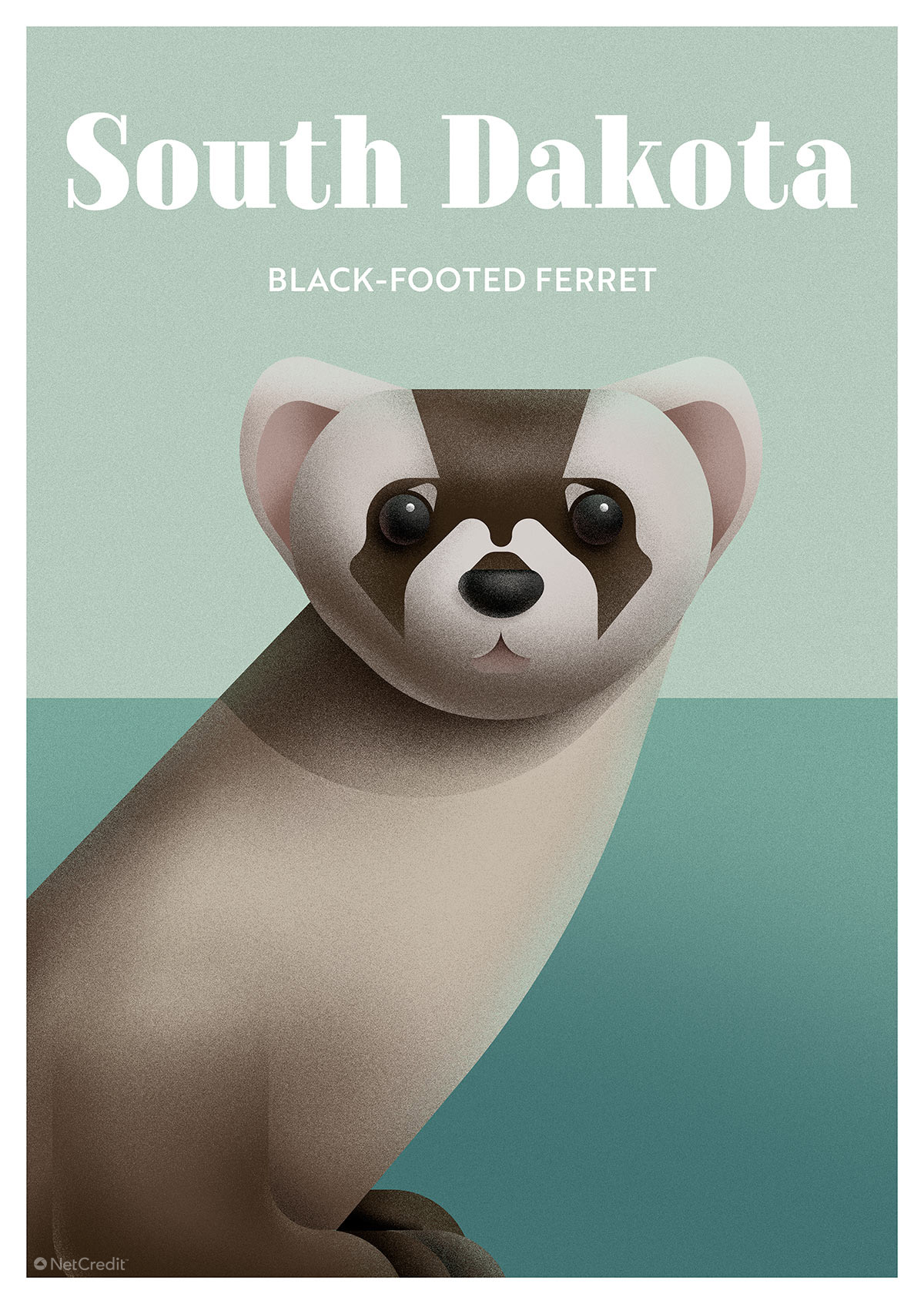
This mink-sized member of the weasel family became extinct in North Dakota back in the 1950s, and as of 2006 fewer than 500 live in South Dakota. Predators and sylvatic plague in the region are not helping conservation efforts.
42. Tennessee: Nashville crayfish
Crayfish are an important source of food for many other creatures. At seven inches long, with four legs and two orange and black-tipped pincers, the Nashville variety looks delicious.
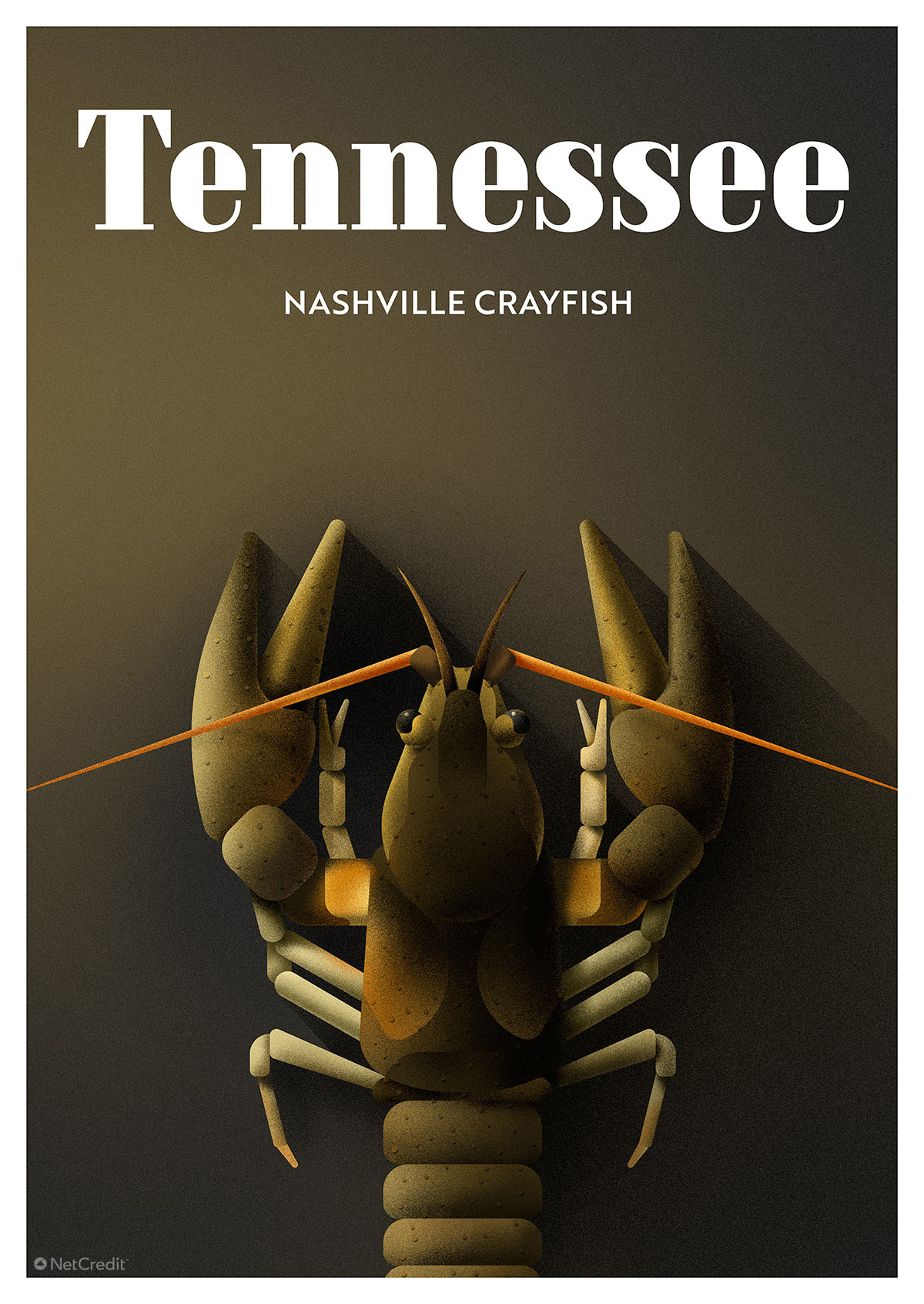
But siltation and pollution have once more spoiled a precious critter’s waters. More than half of Nashville’s Mill Creek is considered spoiled by the state. The crayfish is fighting back, especially with help from Nashville Zoo, but locals can help by reducing the run-off from car-washing and garden pesticides.
43. Texas: Northern Aplomado falcon
The majestic Northern Aplomado is another victim of the prairie dog cull. Experts believe the effect that prairie dogs have on a habitat is beneficial to the species on which the falcon preys. Climate change is also said to have played a part.

It’s a hard-working bird. Parents may go out up to 30 times a day to hunt for smaller birds and insects to feed their chicks. The last wild breeding pair of these gray-backed, red-breasted predators was spotted way back in 1952, but captive falcons are now being introduced to the wild in Texas.
44. Utah: Utah prairie dog
The smallest of the prairie dogs was considered a pest by ranchers and the federal government, who began poisoning them in 1880. Sylvatic plague and drought have done the rest of the damage. By 1990, the clay-colored, squirrel-like rodents dwelt on less than 2% of the land that they had previously occupied.
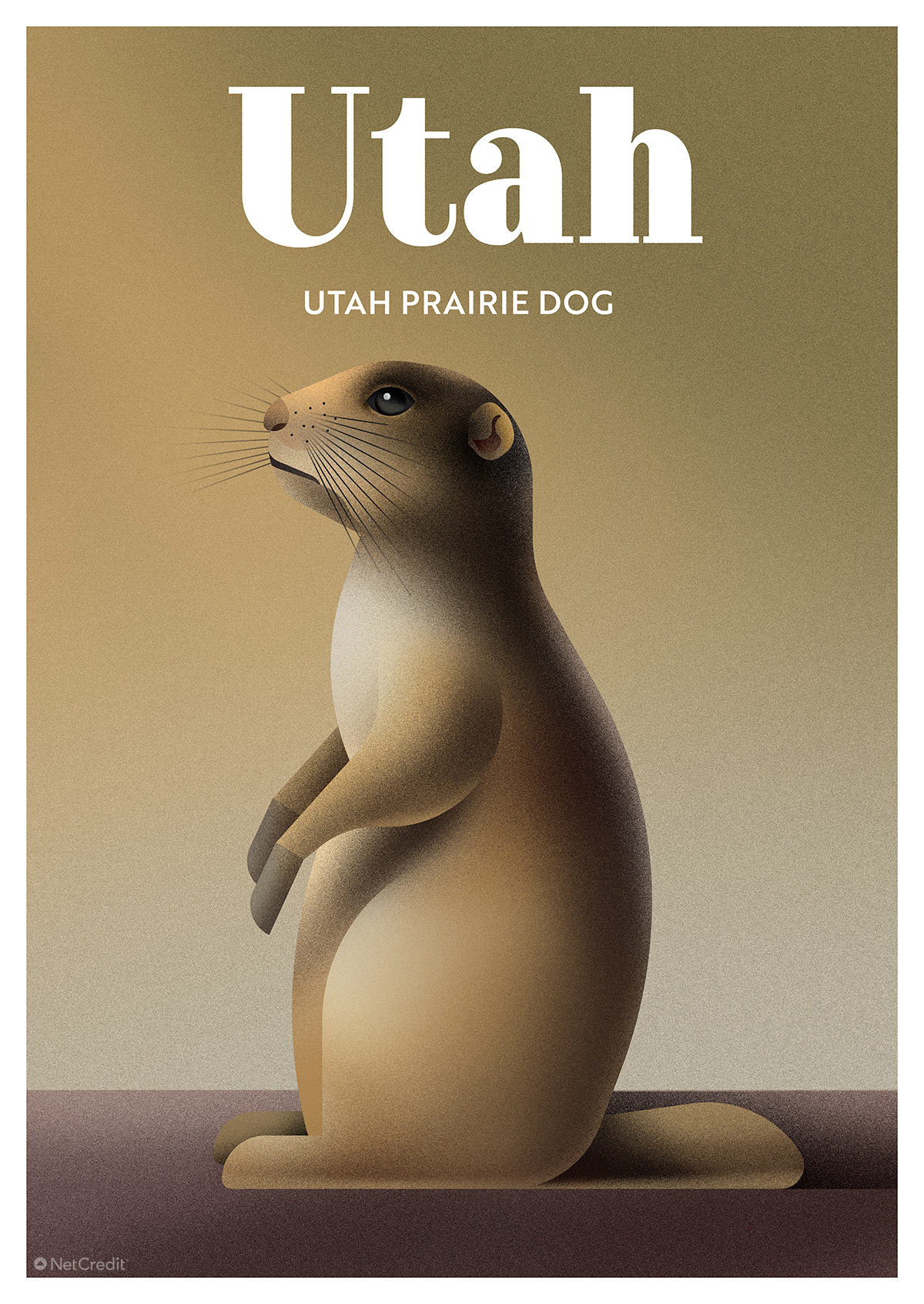
Efforts to recover the species include caution in the development of Utah’s land and voluntary conservation agreements with landowners who are prepared to host the prairie dog.
45. Vermont: Spotted turtle
Vermont’s spotted turtle is too glamorous for its own good. People keep picking them up to sell online, or keep for themselves, unaware that the being beneath its yellow-pocked shell is on the endangered list.
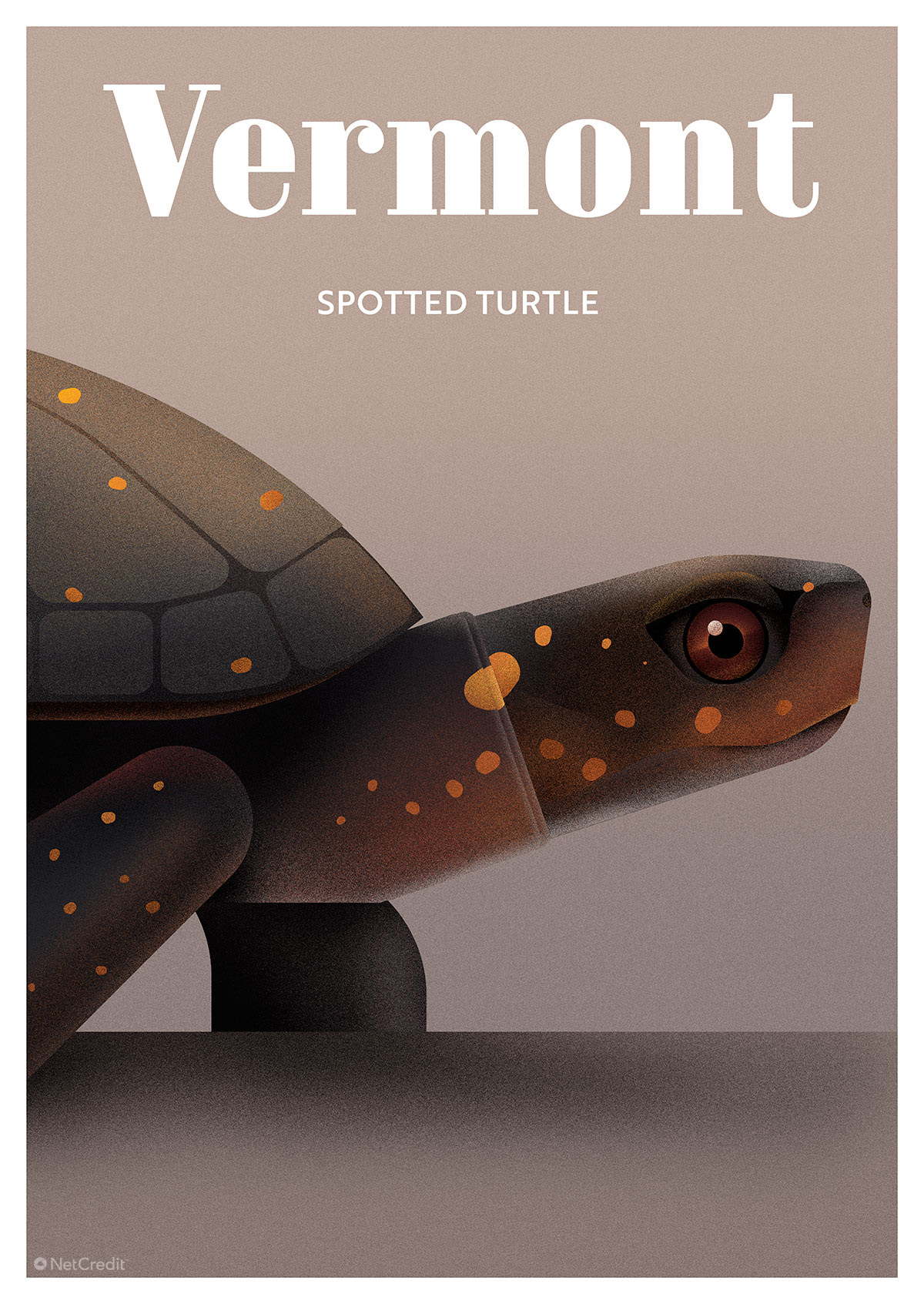
Conservationists are trying to work with authorities to enforce the law on such illegal trade, but with spotted turtles asking nearly $500 each the enemy is greed.
46. Virginia: Shenandoah salamander
Despite the apparent discomfort of ‘breathing’ through their skin, this lungless salamander can live for up to 25 years. It is found only on the high elevation peaks of the Shenandoah National Park.
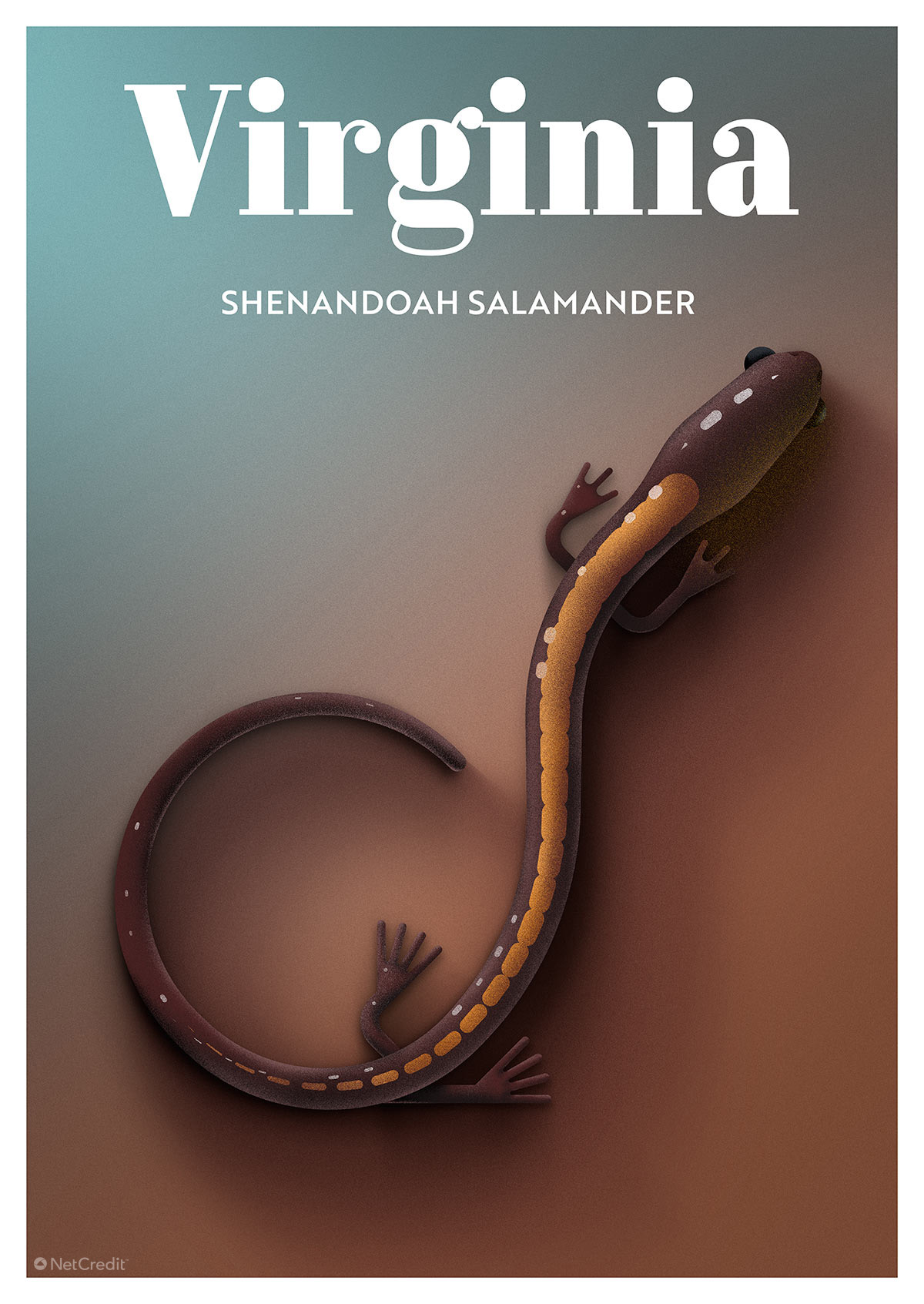
This limited habitat has caused the salamander’s numbers to drop to critically low levels. But rather than humans, it seems that the red-backed salamander is the Shenandoah’s greatest rival, since they compete for space and food.
47. Washington: Columbia Basin pygmy rabbit
The smallest of all rabbits, pygmy rabbits are understandably prey to a range of creatures, from bobcats to owls. Only 50% of bunnies make it home during the first five weeks of their lives!

But the pygmy rabbit’s numbers have plummeted due to the loss of its natural habitat. They rely on sagebrush for both food and shelter. The last purebred Columbia Basin pygmy rabbit died ten years ago, and wildlife services are working hard to increase crossbreed numbers and redistribute them to the wild.
48. West Virginia: Virginia big-eared bat
The Virginia big-eared bat really does have very big ears – around a quarter the length of its entire body. It lives in caves near oak-hickory or beech-maple-hemlock regions. Nobody’s quite sure where the males go in the summer, while the females give birth to a single pup each June.
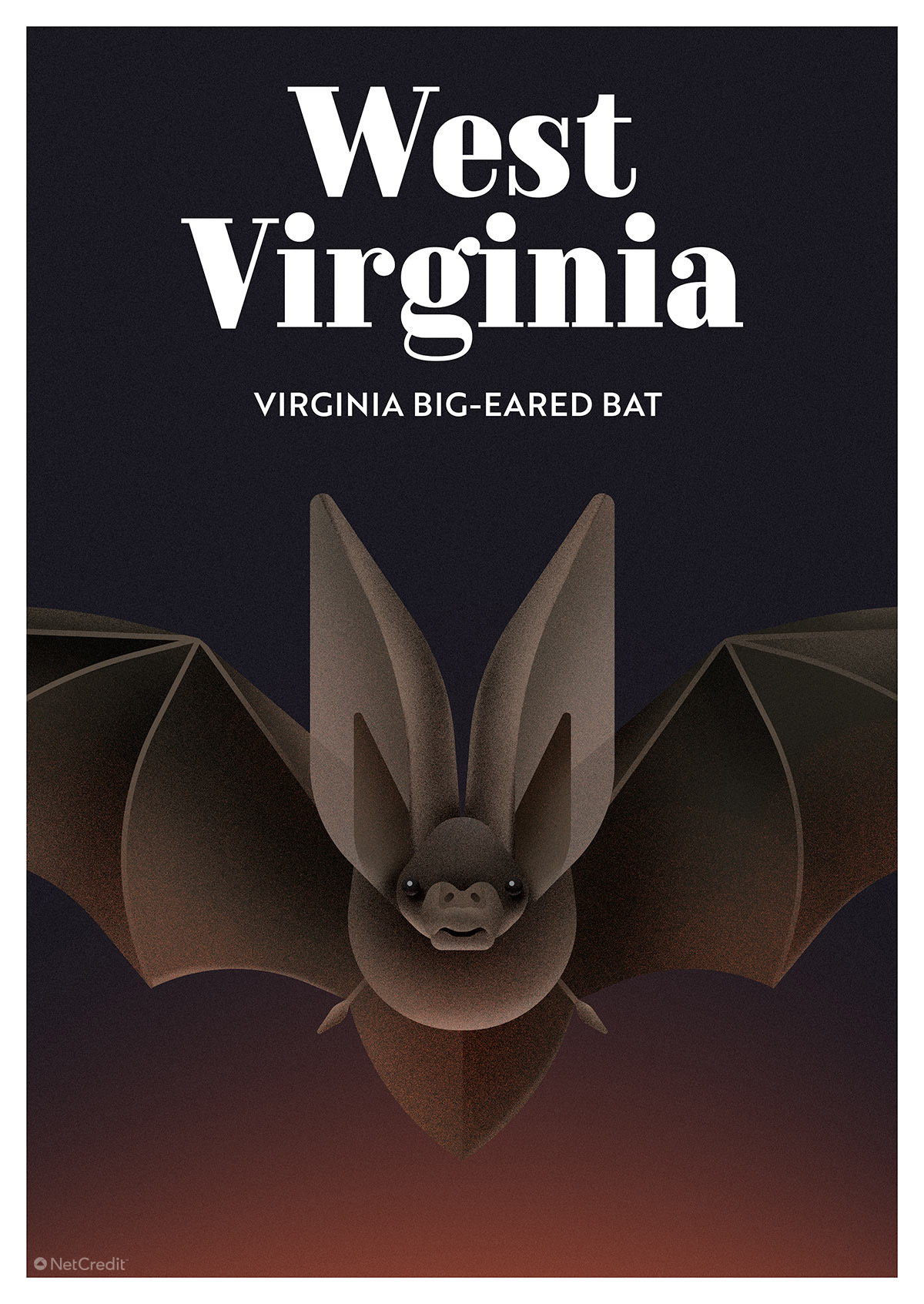
Disturbing these bats during hibernation can cause them to use up precious fat reserves, so that they starve before the moths that they survive on return in the spring. The number of big-eared bats in West Virginia was on the decline as of 2005.
49. Wisconsin: piping plover
The piping plover is as cute as its name. Notable for its black collar and ‘eyebrows,’ this shorebird wanders cobble and sand beaches feeding on worms, crustaceans and – for a treat – the occasional bivalve mollusk.

Human beach goers have a tendency to stand on or drive over the bird’s nests, or to disturb the ground and make the nests vulnerable to predators or hot sunlight. Conservationists are working to designate safe areas for the birds.
50. Wyoming: Wyoming toad
Just over two inches long, with a spotted belly and a snazzy stripes-and-blotches design on its back, the Wyoming toad was once ubiquitous around the Laramie River Basin in Wyoming.
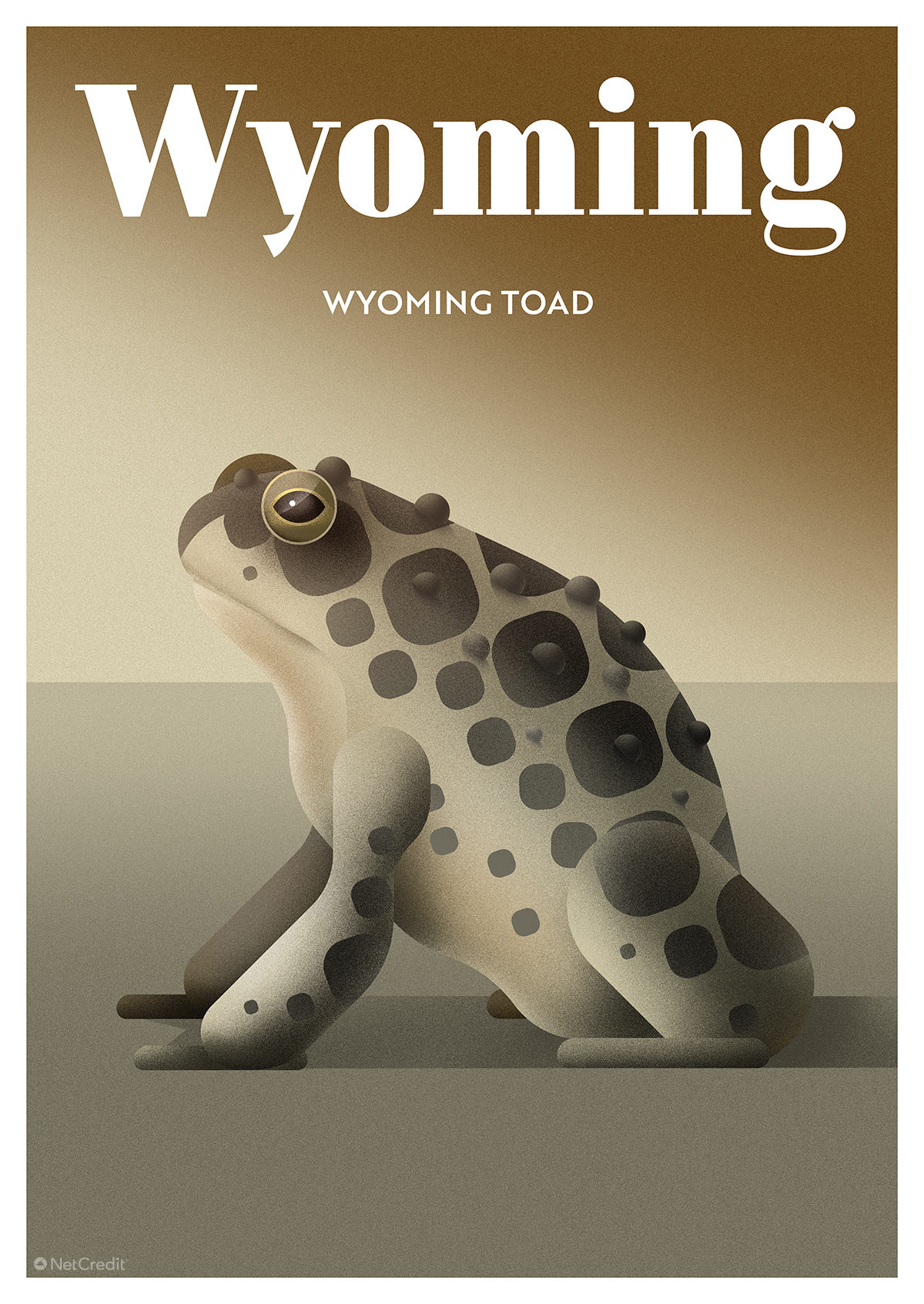
Today, this warty fellow is considered extinct in the wild. The reintroduction of tadpoles and toadlets has been tried with mixed success. Pesticides, urban development and disease have done away with the Wyoming toad for now, although perhaps he will be back.
The Wyoming toad’s story echoes that of many of these 50 endangered species across the States. Human greed and thoughtlessness has made their ongoing survival a real challenge. But a handful of good-hearted and selfless individuals are hard at work trying to turn the story around.
Sources
Arizona Board of Regents. (2018). Mount Graham Red Squirrel. mgio.arizona.edu
Brean, H. (2016). Finding endangered Mount Charleston butterflies has researchers hopeful. reviewjournal.com
Center for Biological Diversity (2018). Utah prairie dog. biologicaldiversity.org
Center for Biological Diversity (2018). Virginia big-eared bat. biologicaldiversity.org
Clark, A. (2013). Rare spotted turtle gets endangered species protection. vtdigger.org
Coleman Fedor, C. (2014). Flatwoods Salamander – Ambystoma cingulatum. scwf.org
Dickie, G. (2017). The Birds and the Bugs: Trying to Save Hawaii’s Akikiki and Akeke’e. therevelator.org
Dublin, H. (2018). Endangered species. britannica.com
Endangered.org (2018). Kentucky Arrow Darter. endangered.org
Flesher, J. (2018). Feds propose dropping Kirtland’s warbler from endangered list. eu.freep.com
Florida Fish & Wildlife Conservation Commission (2018). Red Wolf: Canis rufus. myfwc.com
Green Global Travel (2018). Endangered Species Spotlight: Alabama Beach Mouse. greenglobaltravel.com
Harrington, J. and Frohlich T. C. (2018). The most endangered animals in every state. 247wallst.com
Heimbuch, J. (2011). 4,600 Sea Turtles Killed In US Fisheries Every Year — But That’s Good News. treehugger.com
Kassam, A. (2018). Last caribou in lower 48 US states all but extinct: ‘The herd is functionally lost’. theguardian.com
Laughlin, M. (2010). Saving the Illinois Cave Amphipod. smilepolitely.com
Lindsay (2012). The Wyoming Toad: Almost extinct in America’s backyard. amphibianrescue.org
Maryland Department of Natural Resources (2018). Maryland Darter. dnr.maryland.gov
Missouri Department of Conservation (2018). Hellbender. nature.mdc.mo.gov
Montana Fish, Wildlife, and Parks (2018). Whooping Crane. fwp.mt.gov
Nashville Zoo (2018). Nashville Crayfish Conservation. nashvillezoo.org
National Geographic. Blue Whale. nationalgeographic.com
National Park Service (2018). Shenandoah Salamander. nps.gov
National Wildlife Federation (2018). Loggerhead Sea Turtle. nwf.org
National Wildlife Federation (2018). Louisiana Pine Snake. nwf.org
NBC Boston (2018). Humpback Whale Calf Seen Floating Near Mass. Coast Dies. nbcboston.com
North Dakota Game and Fish Department (2016). Least Tern. gf.nd.gov
Northeast PARC (2018). Blanding’s Turtle. northeastparc.org
ODWC (2018). Neosho Mucket (Lampsilis rafinesqueana). wildlifedepartment.com
Owen, J. (2005). ‘Extinct’ Woodpecker Found in Arkansas, Experts Say. nationalgeographic.com
Pacific Islands Regional Office (2018). Hawksbill. fpir.noaa.gov
Haffner, C. (2018). Short-Eared Owl. pgc.pa.gov
Ratcliffe, B. C. (1997). Endangered American burying beetle update. museum.unl.edu
Roe, K. (2017). Iowa Pleistocene Snail. nrem.iastate.edu
State of Connecticut (2018). Bog Turtle. ct.gov
Texas Parks and Wildlife Department (2018). Northern Aplomado Falcon (Falco femoralis). tpwd.texas.gov
US Fish and Wildlife Service (2005). SERVICE LISTS SALT CREEK TIGER BEETLE AS ENDANGERED. Fws.gov
US Fish and Wildlife Service (2013). Endangered species. Fws.gov
US Fish and Wildlife Service (2013). Black-footed Ferret. Fws.gov
US Fish and Wildlife Service (2014). Mississippi Sandhill Crane. Fws.gov
US Fish and Wildlife Service (2016). Delmarva Peninsula Fox Squirrel. Fws.gov
US Fish and Wildlife Service (2017). Point Arena Mountain Beaver. Fws.gov
US Fish and Wildlife Service (2018). Uncompahgre fritillary butterfly. Fws.gov
US Fish and Wildlife Service (2018). Rusty Patched Bumble Bee. Fws.gov
US Fish and Wildlife Service (2018). Piping Plover Critical Habitat. Fws.gov
US Fish and Wildlife Service (2018). Eastern Massasauga Rattlesnake. Fws.gov
US Fish and Wildlife Service (2018). Indiana Bat (Myotis sodalis). Fws.gov
US Fish and Wildlife Service (2018). Copperbelly Water Snake. Fws.gov
US Fish and Wildlife Service (2018). Carolina northern flying squirrel. Fws.gov
US Fish and Wildlife Service (2018). Etowah darter. Fws.gov
Washington Fish and Wildlife Office (2018). Pygmy Rabbit (Columbia Basin DPS). fws.gov
WildEarth Guardians (2018). New Mexico meadow jumping mouse. wildearthguardians.org
Young Forest Project, The. (2018). New England Cottontail. youngforest.org


